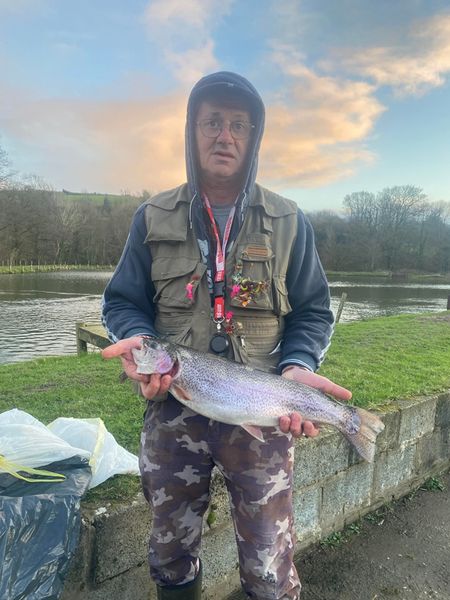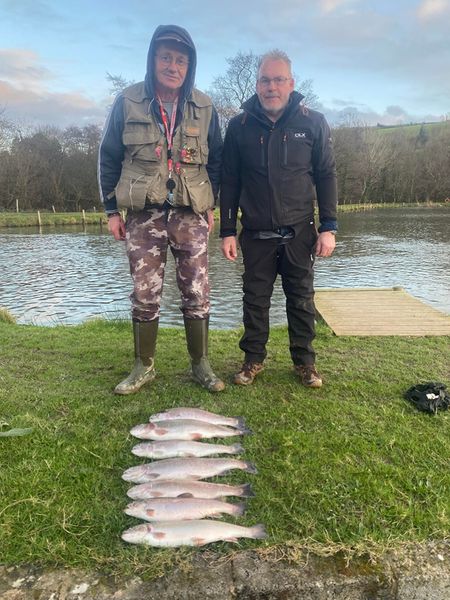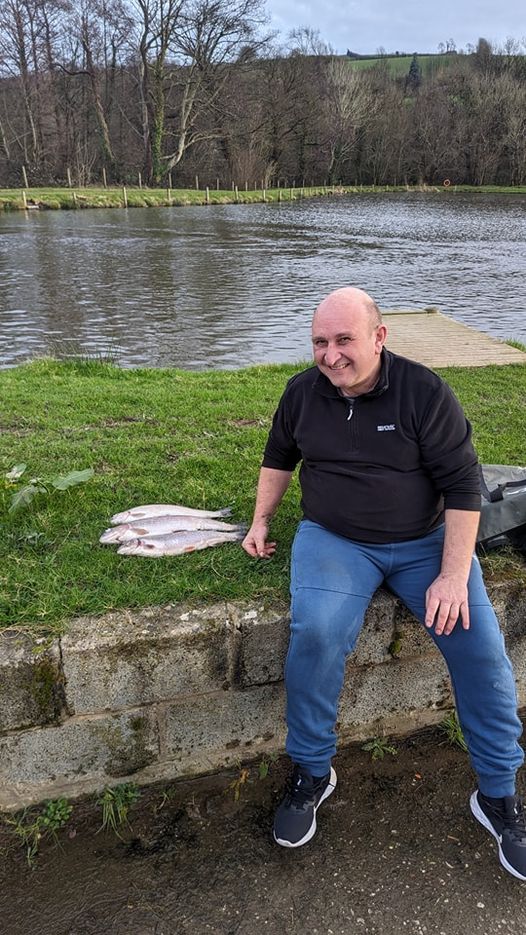Combe Martin SAC member Kevin Legge enjoyed success from North Devon rock marks landing this double figure bull huss of 11lb 3oz and a specimen conger of 26lb 9oz.
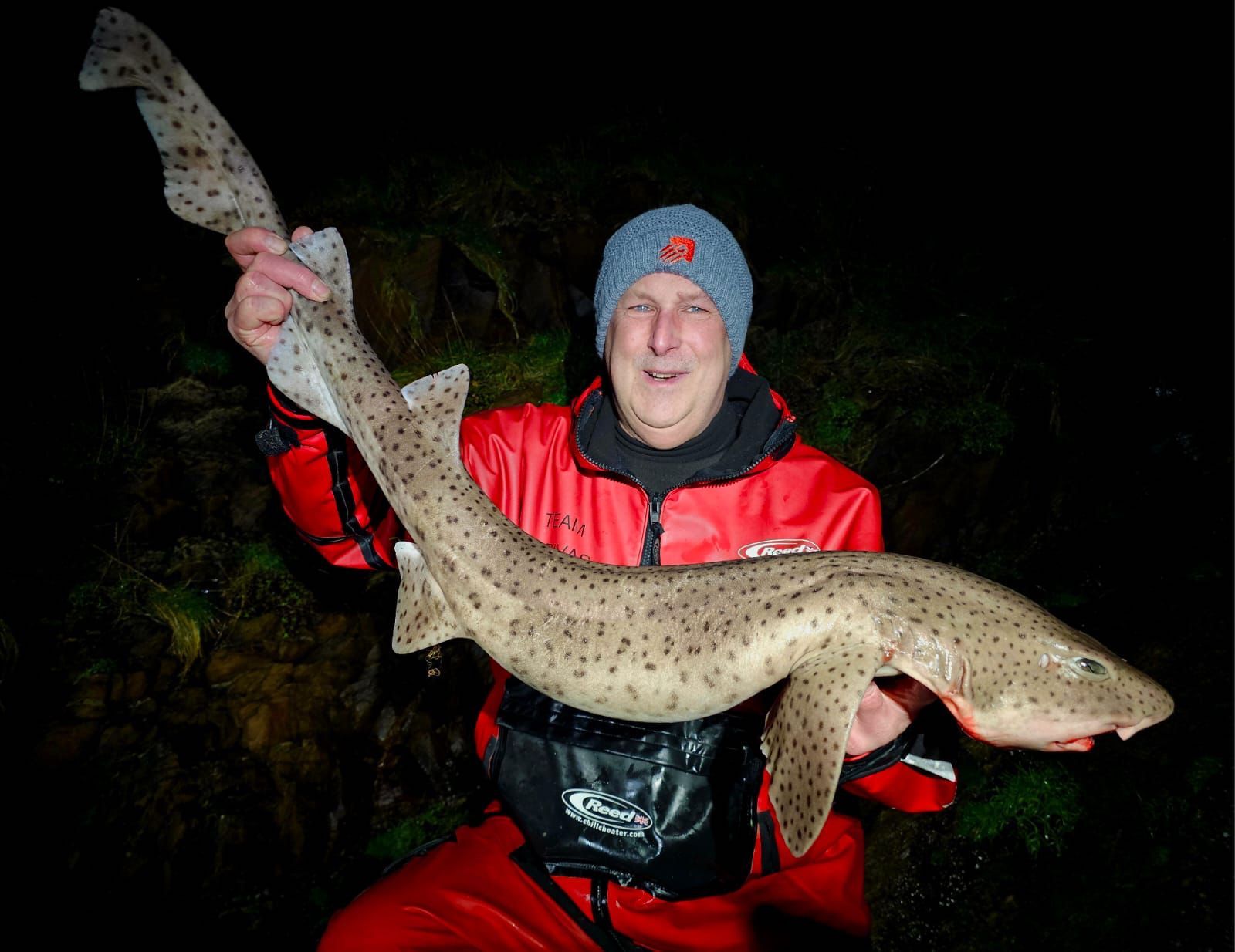
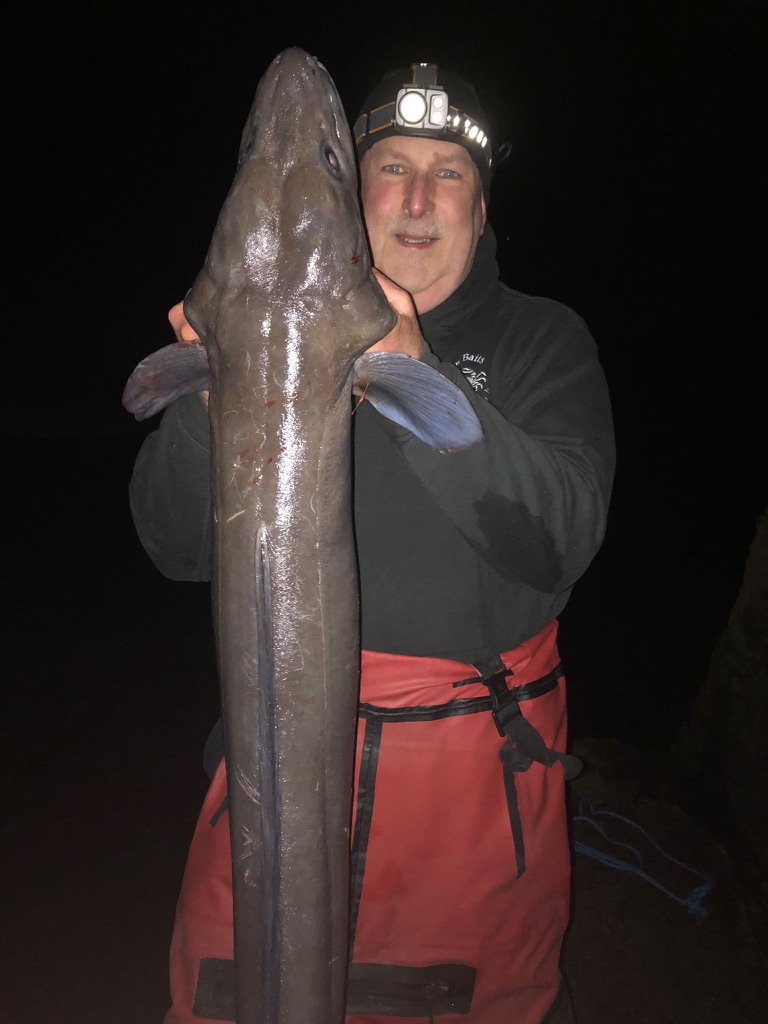
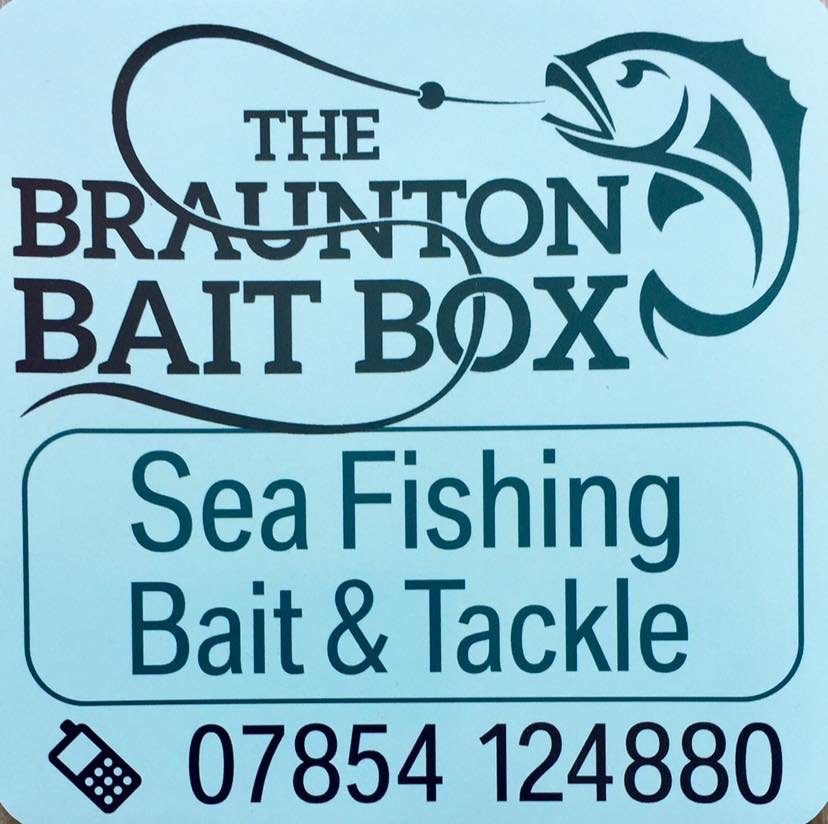
Bideford and District Angling Club held their presentation night at Bideford Conservative Club Friday February 23rd with close to forty members attending. I was privileged to join in presenting several awards along with Simon McCarthy from Summerlands Tackle. The evening was very enjoyable and a very positive vibe was apparent as members cheered the winners and added the occasional good natured banter to proceedings. It was very encouraging to hear of a very healthy number of Junior anglers taking part during the summer Coarse series. Many thanks to Adam Wheeler for taking some excellent pictures of the evening.
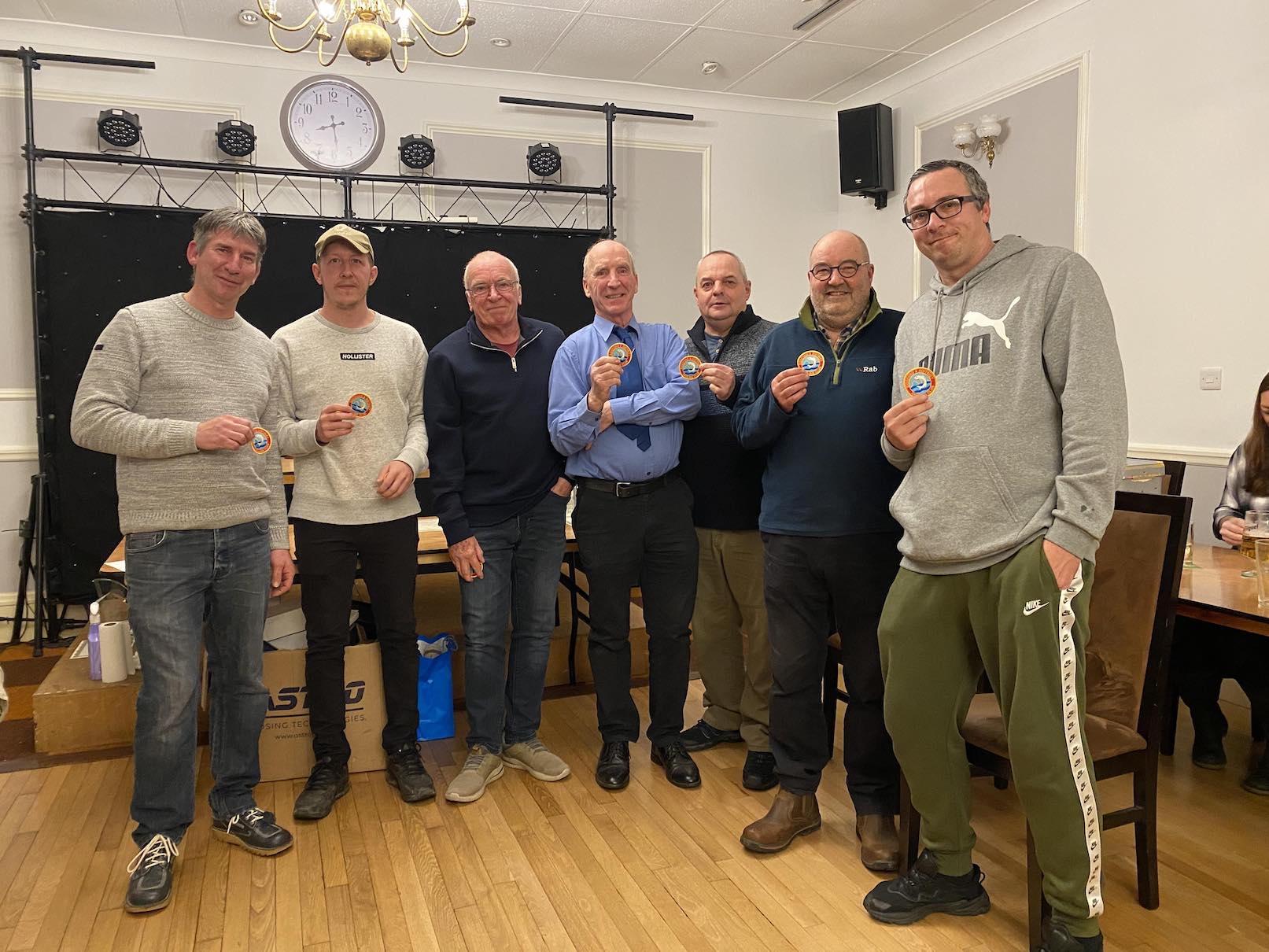
Season 2023 / 24
Matchmans Cup
Nathan Underwood
126 points
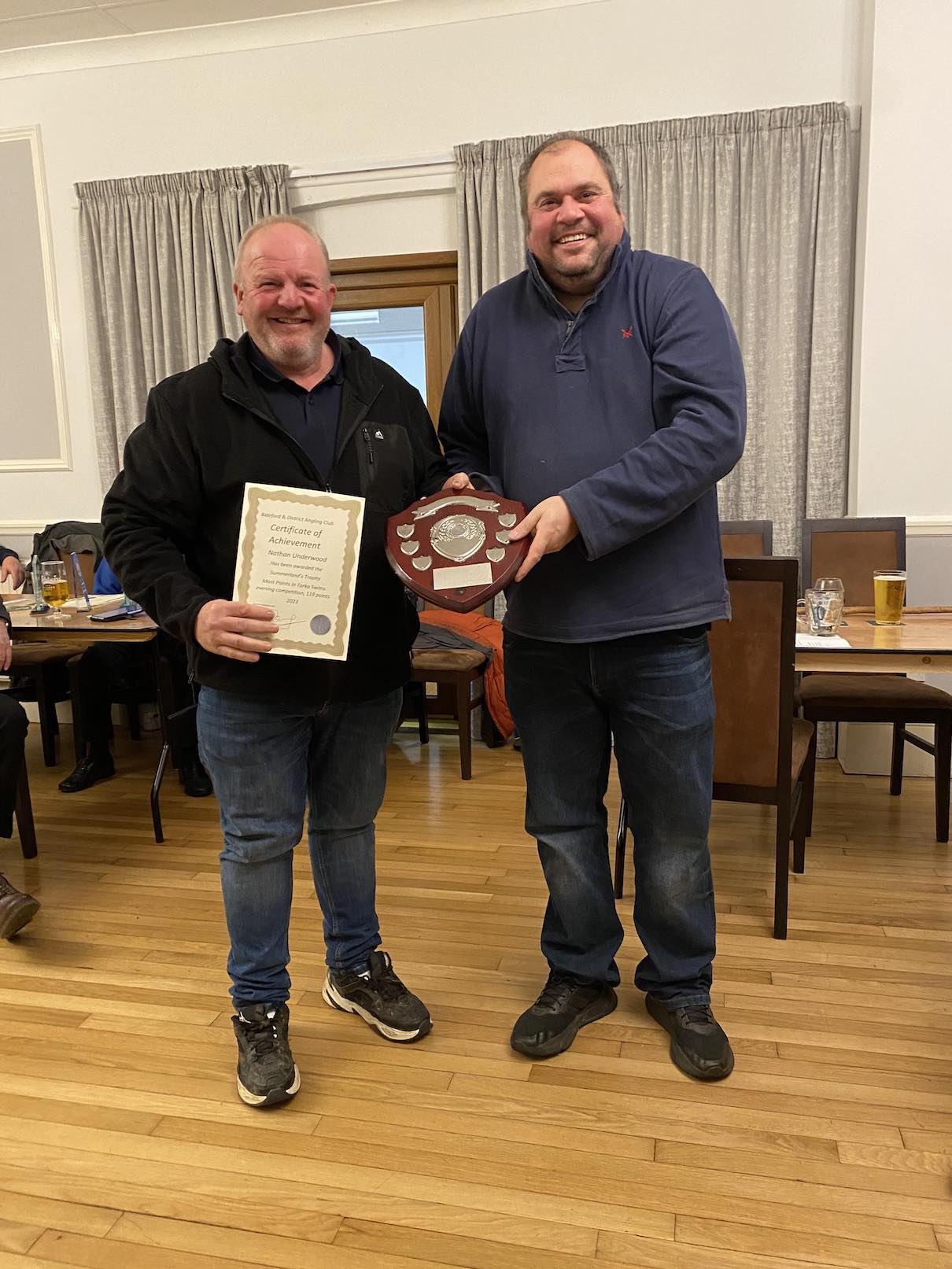
Runner-up
Kevin Shears
115 points.
Junior winner
Brodie Allin
57 points
Junior runner-up
Ted Blight
48 points
Evening series
Winner
Nathan Underwood
119 points
Evening Runner-up
Richard Jefferies
107 points
Pairs trophy winners
Roger Ackroyd
Craig Lamey
Top weight in competition
Darren Polden 71lbs

Stephen Found 55 pts
Valentine bowl – most points in the monthly Rover.
Nathan Clements Gilthead bream 8lb 2 1/4 203.515%
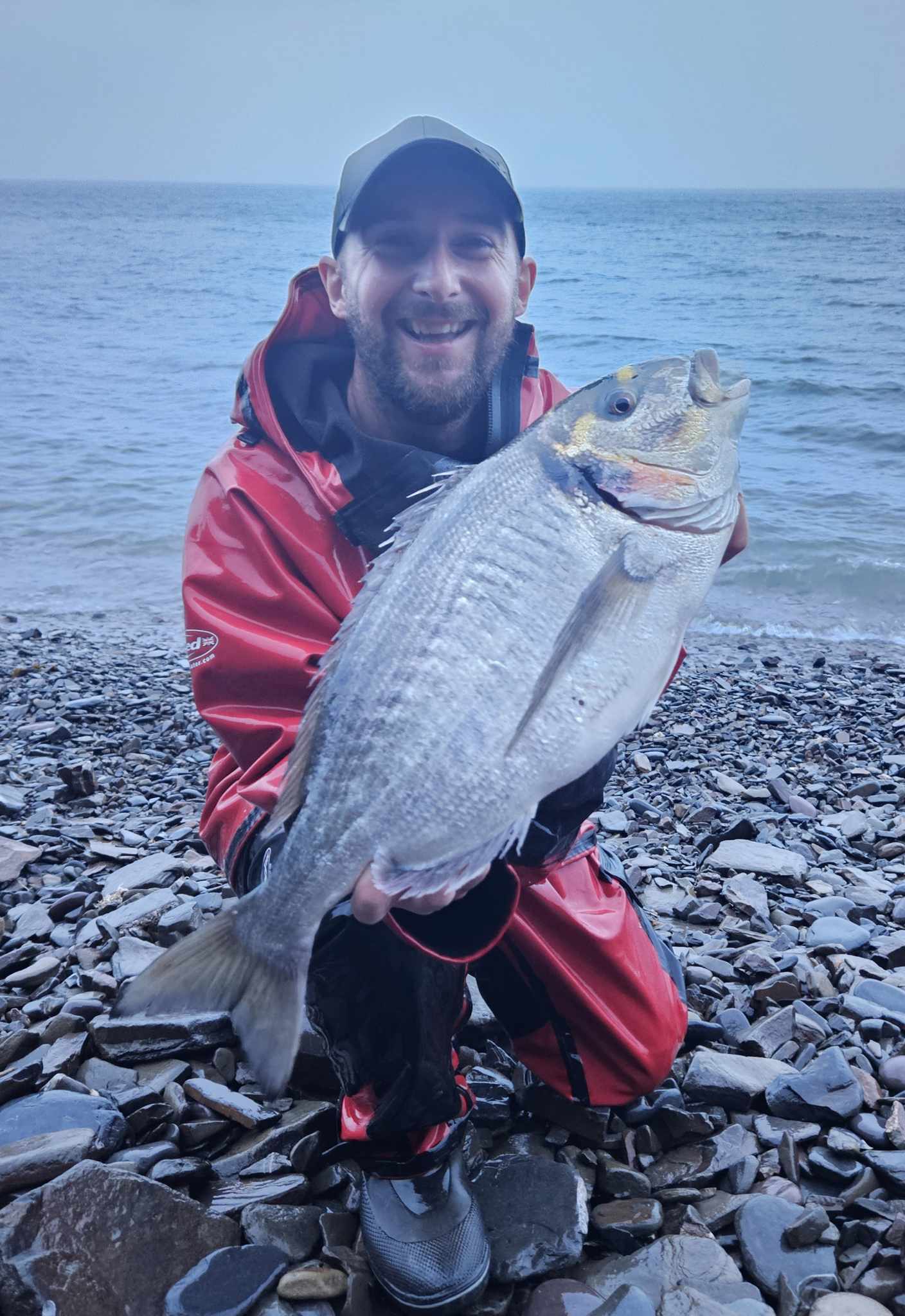
Stephanie Vanstone – Best specimen caught from the shore.
Stephen Found Thornback Ray 13lb 10 151.388%
Jason Talbot Memorial plate – Best specimen ray caught from the shore.
Tony Gussin Conger 14lb 5 71.562%
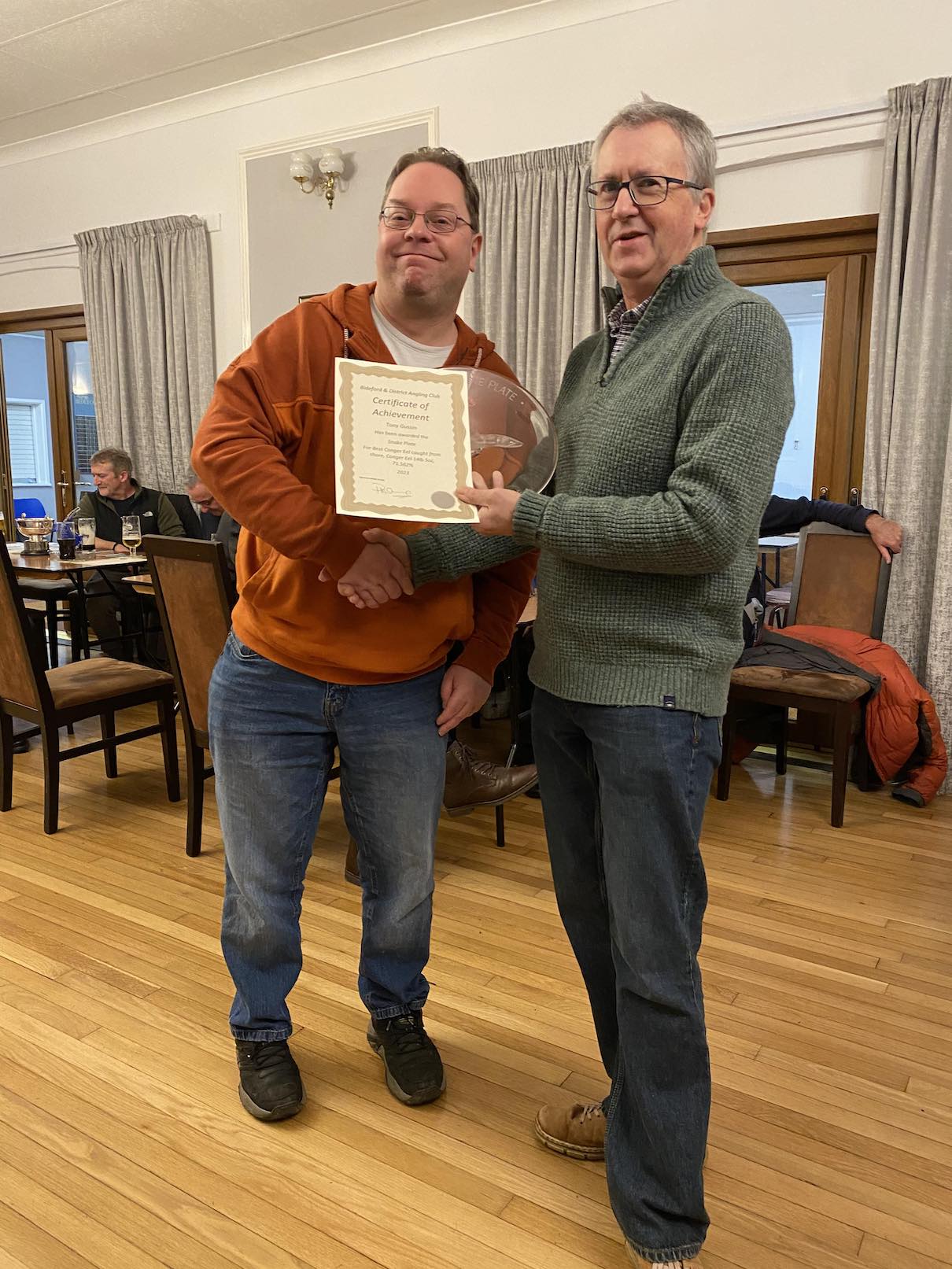
Snake plate – best specimen Conger caught from the shore.
Nathan Clements Gilthead bream 8lb 2 1/4oz
Best round fish from the shore
Stephen Found Flounder 2lb 4oz 112.5%
Best specimen flat fish caught from the shore
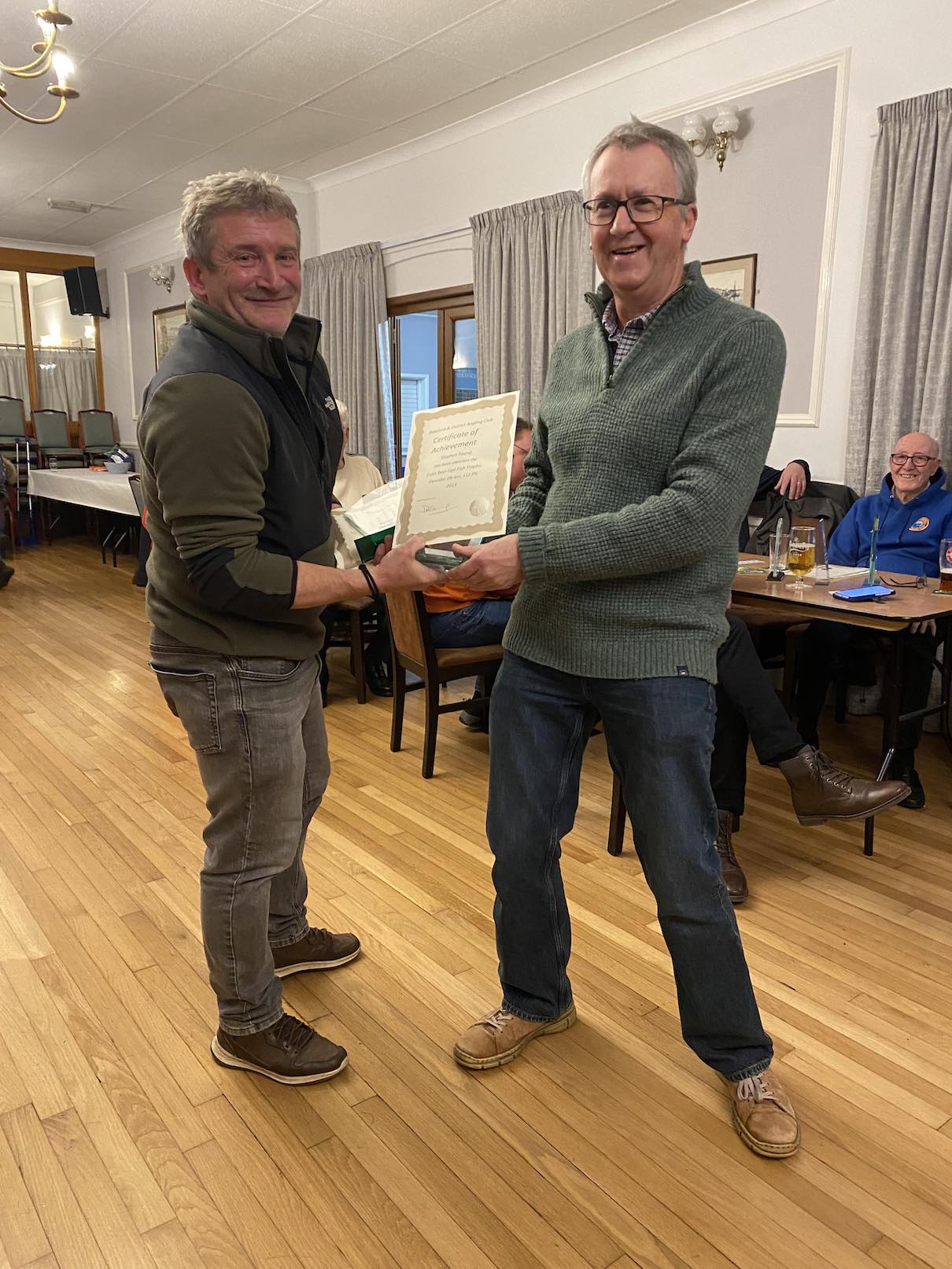
Stephen Found Smoothhound 14lb 5oz 143.125%
Best specimen shark from the shore.
Nathan Clements Small-eyed Ray 10lb 4oz 1/2 114.236%
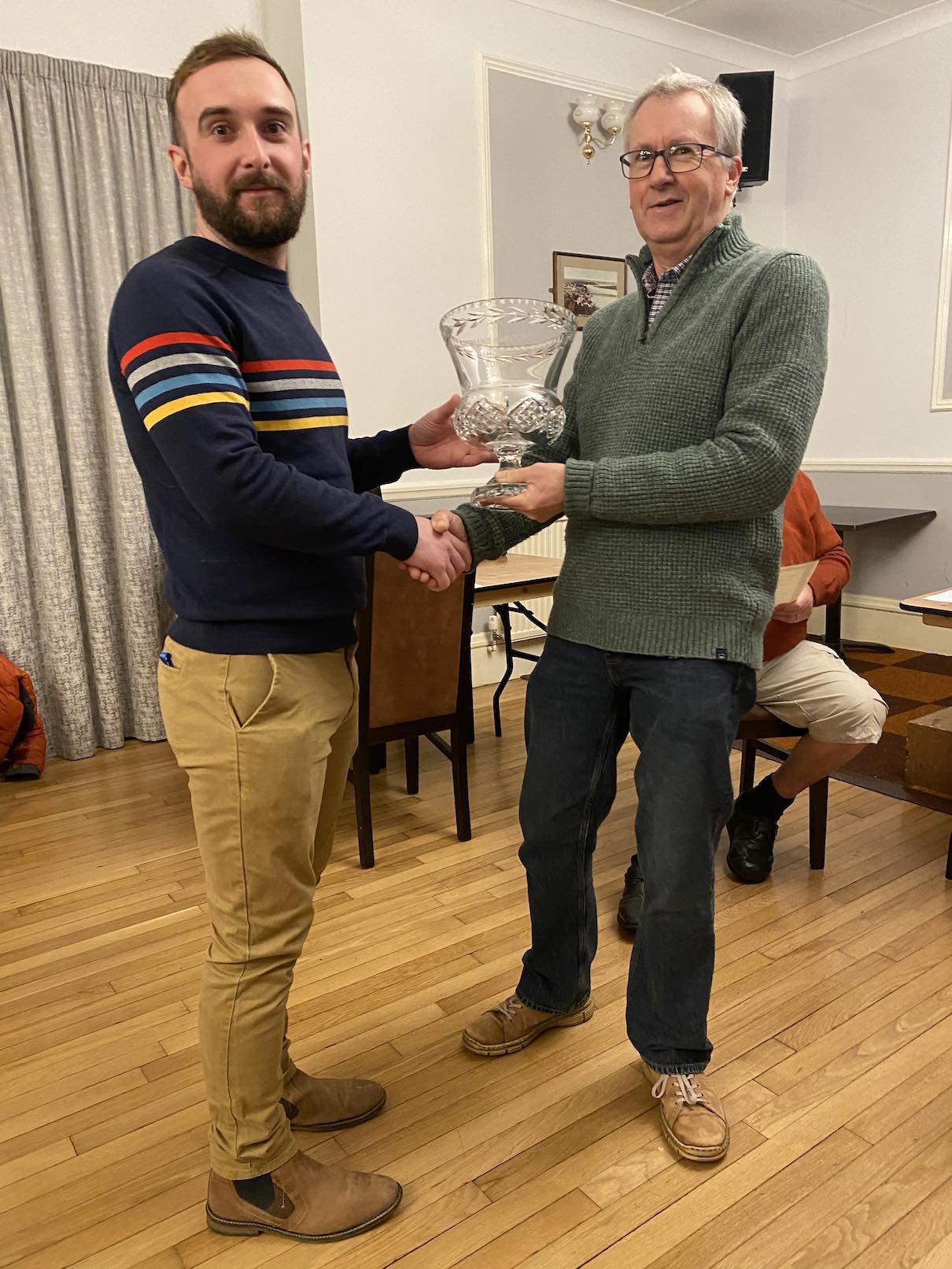
Winner of end of season competition
Paul Ackland 4lb 1oz
Big Mike Memorial vase
Stephen Found total of 1160.118%
Species challenge cup
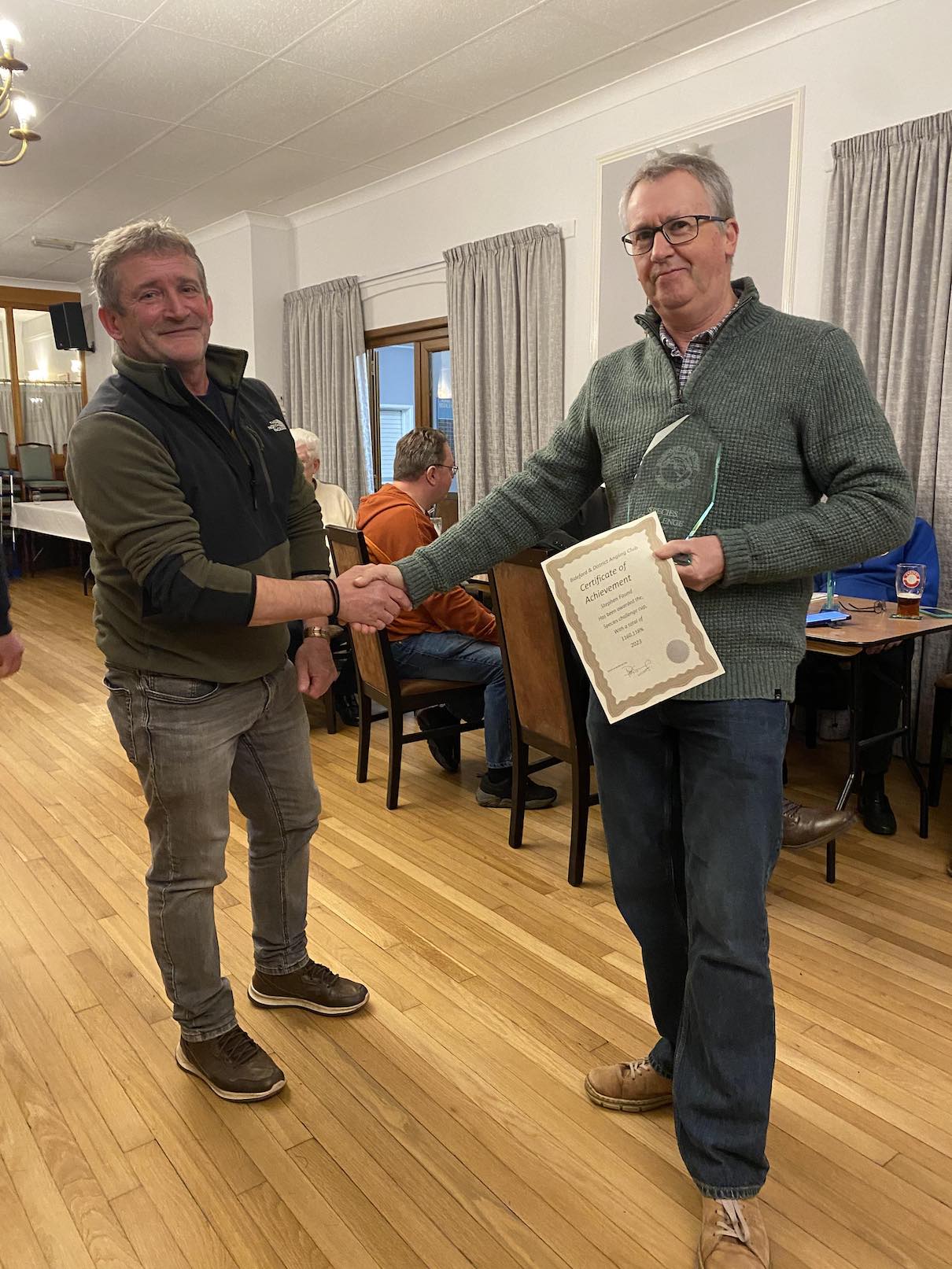
In the game fishing section John Mc Cullam and Terry Dymond dominated the results collecting five awards between them.
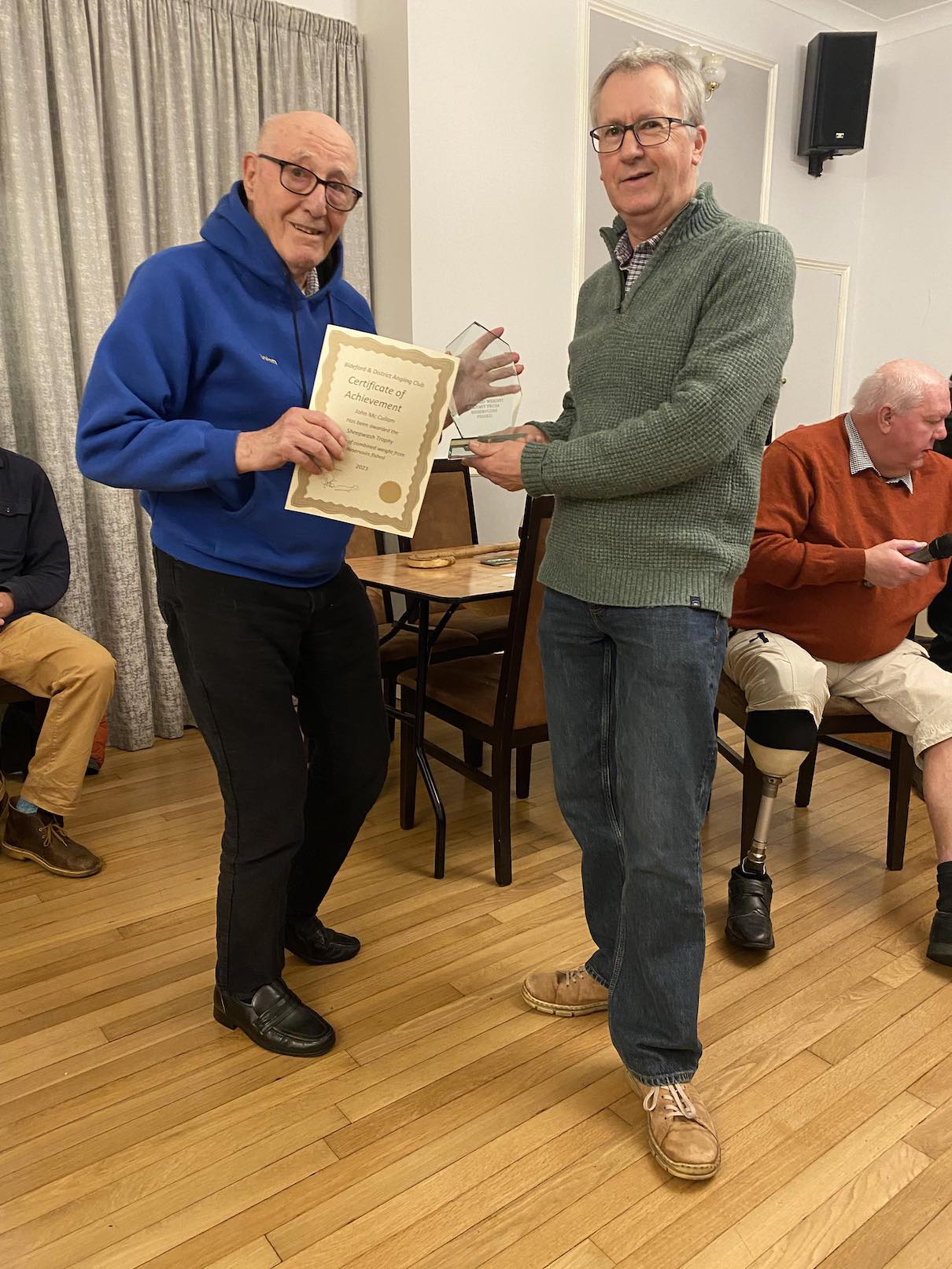
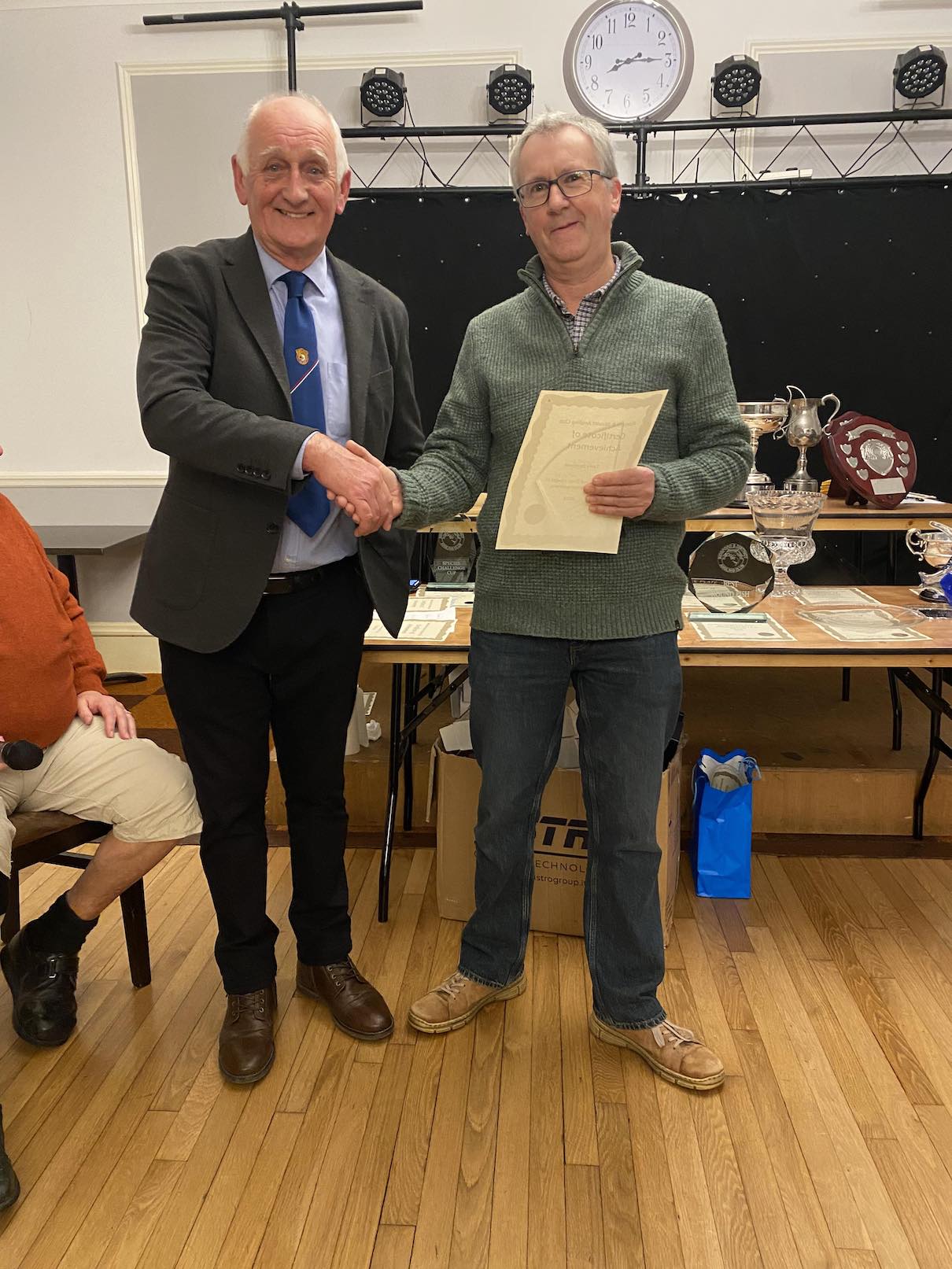

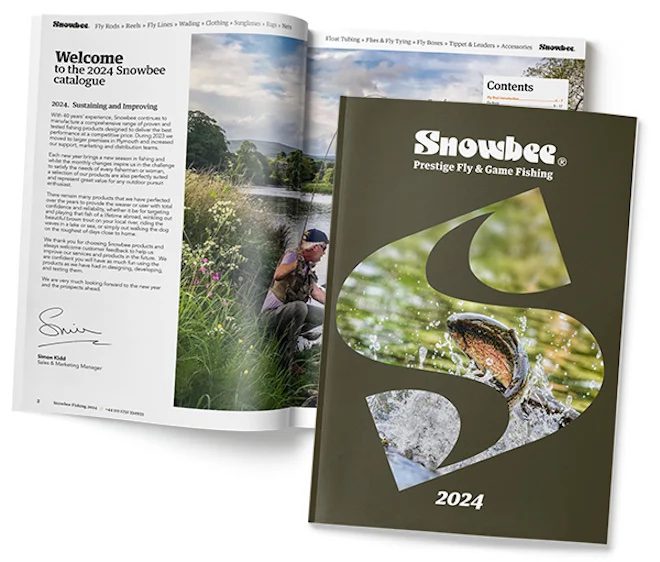


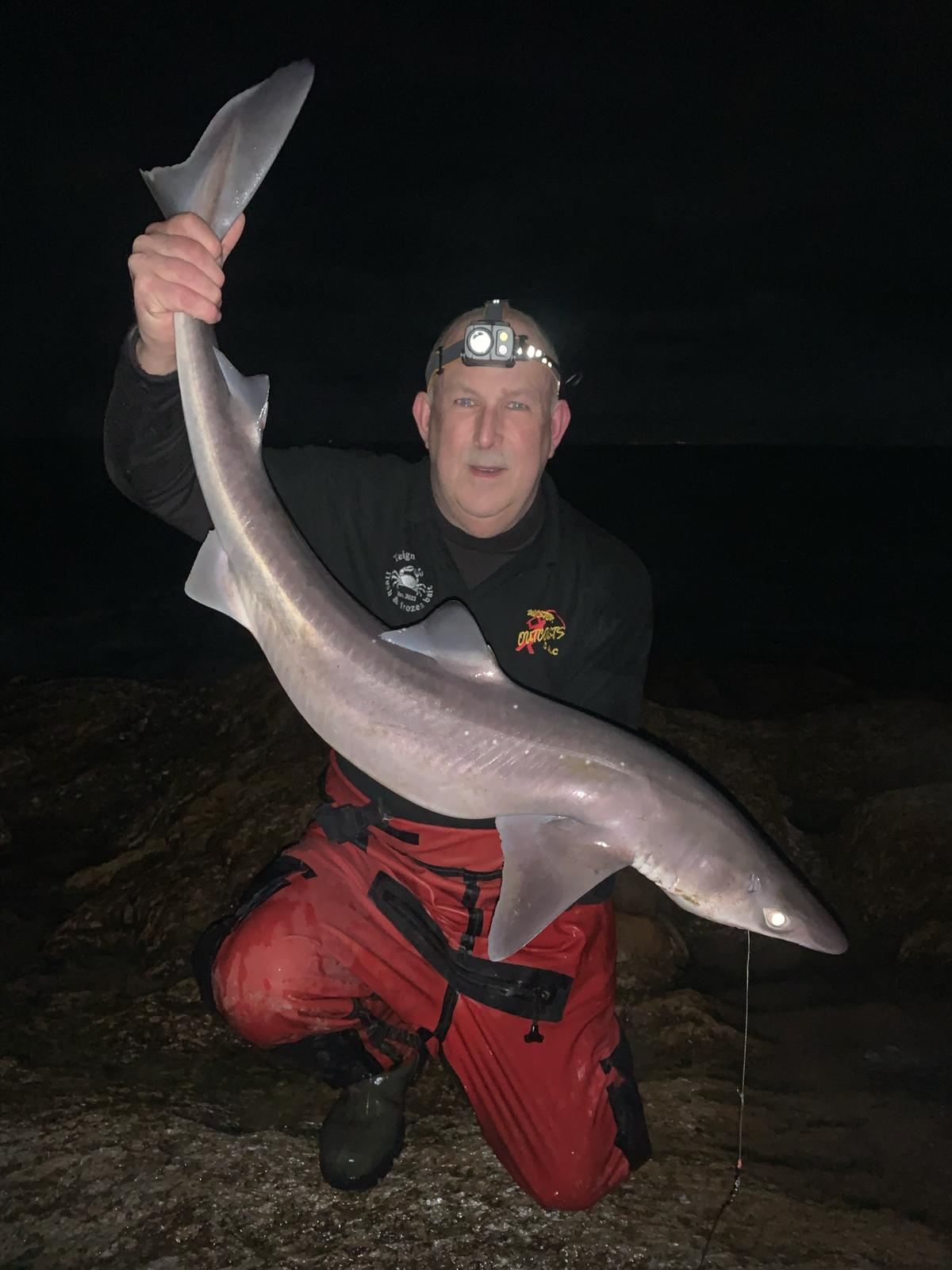
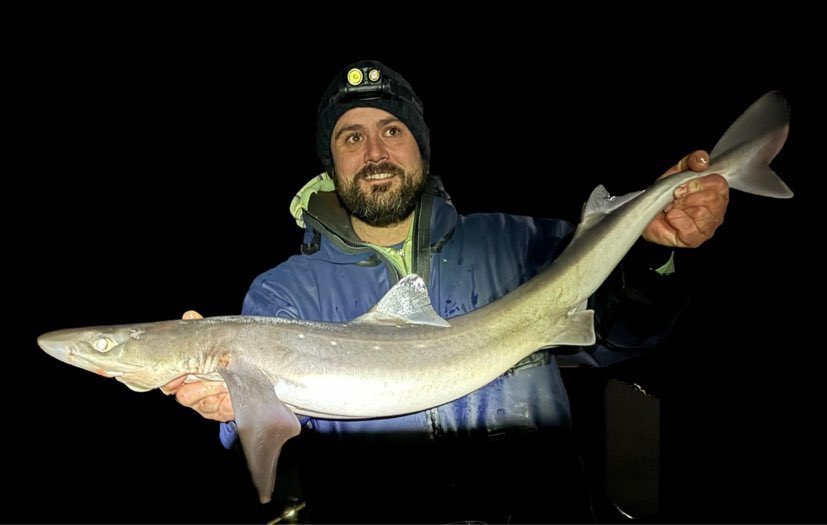

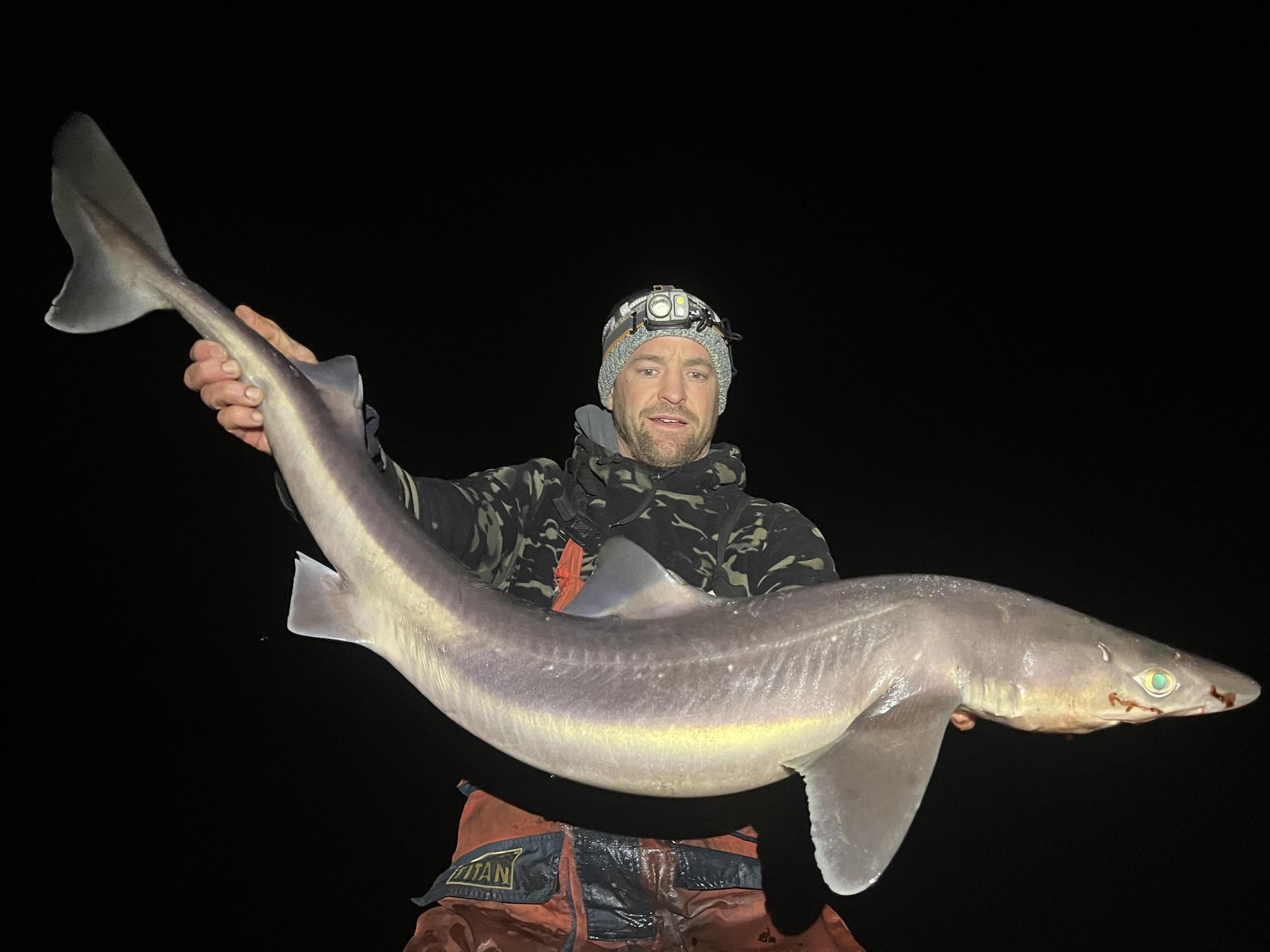
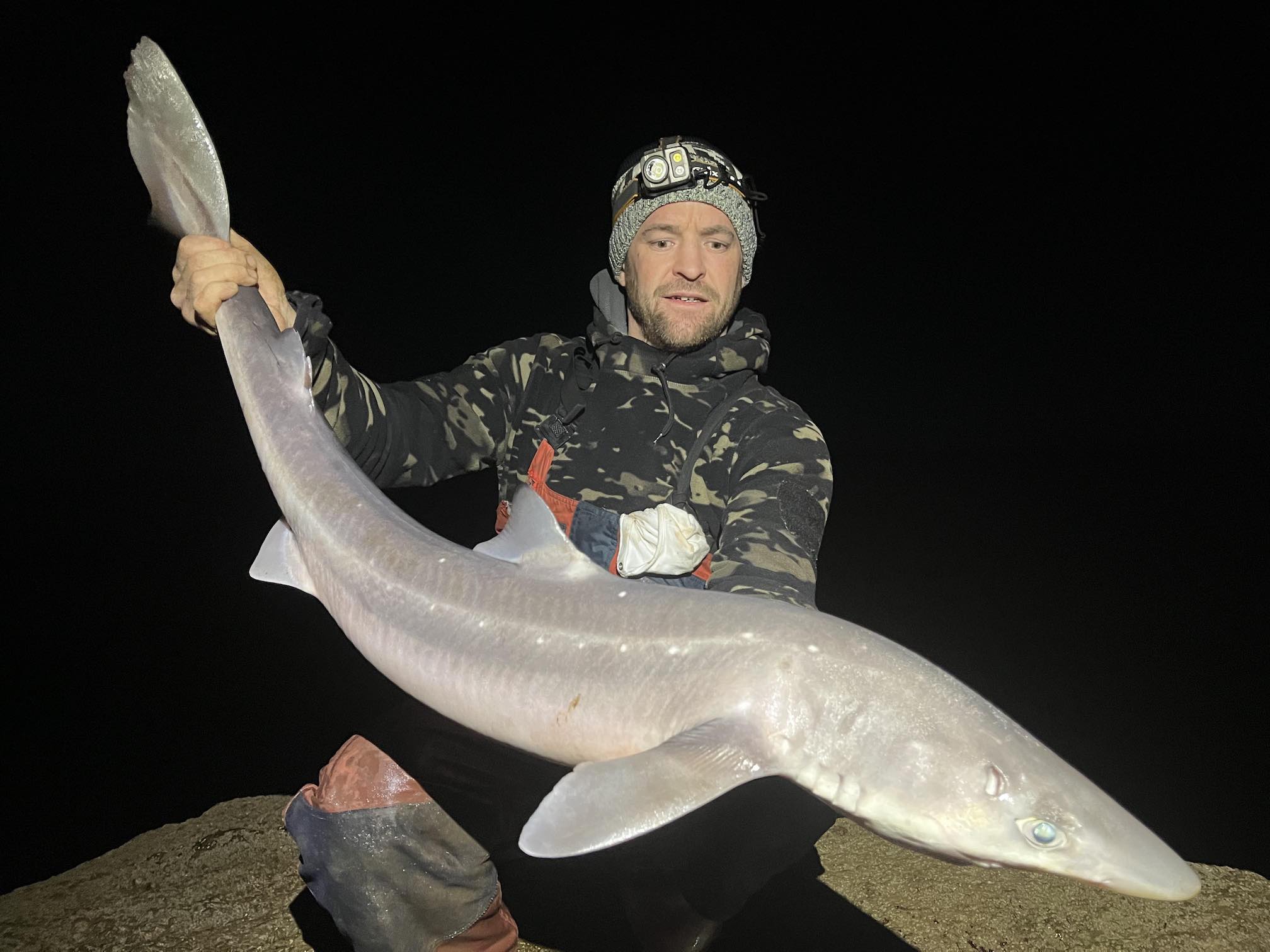
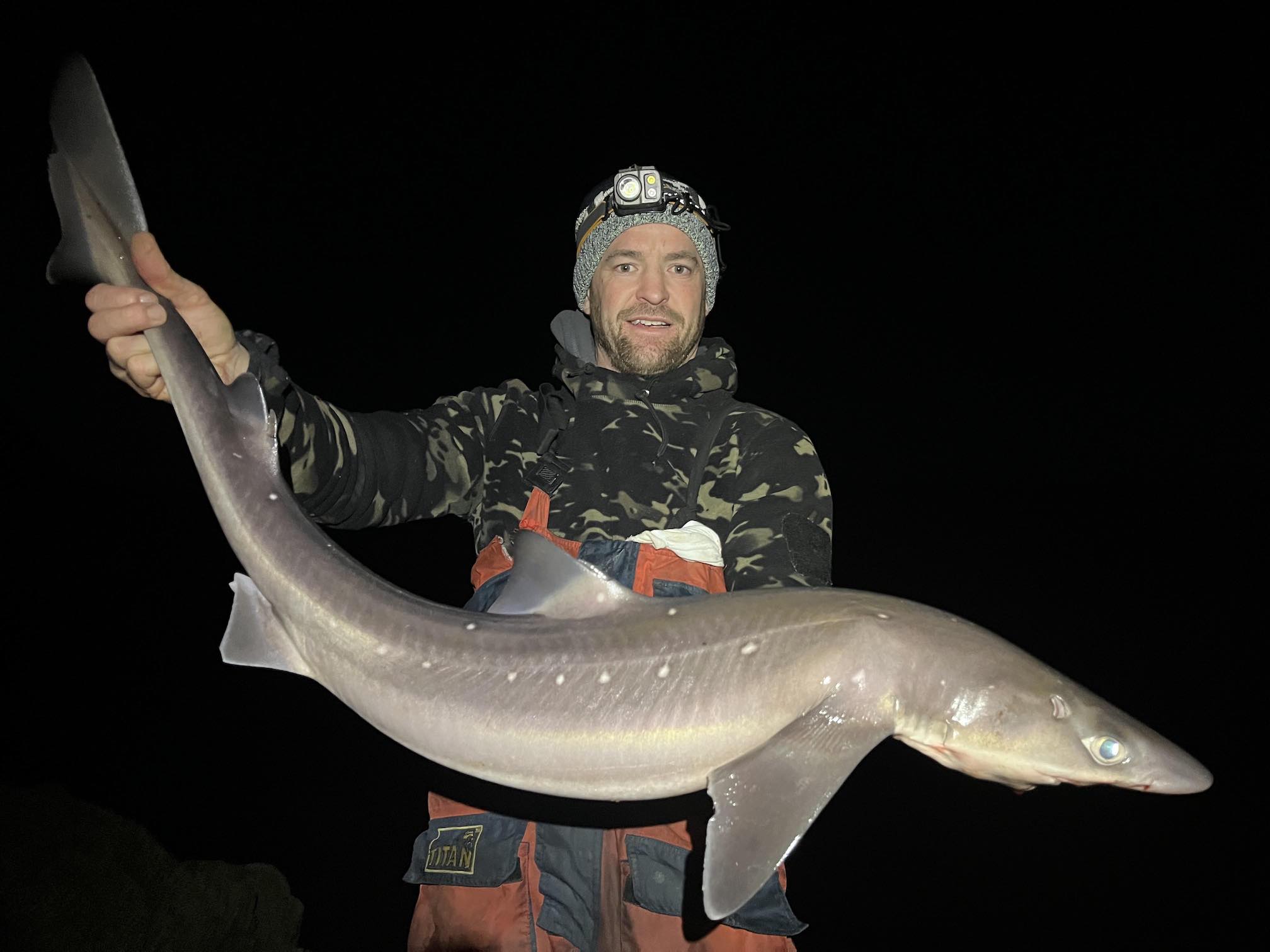
South West Lakes Trust hosted their annual Fly Fair at Roadford where Fly anglers from all over the South West converged for this ever popular curtain raiser to a new season. A wide variety of stands represented those involved in the Fly Fishing Community. The events main sponsors were Chevron Hackles, Holmleigh Angling Centre, Catch, Snowbee and Turrall.
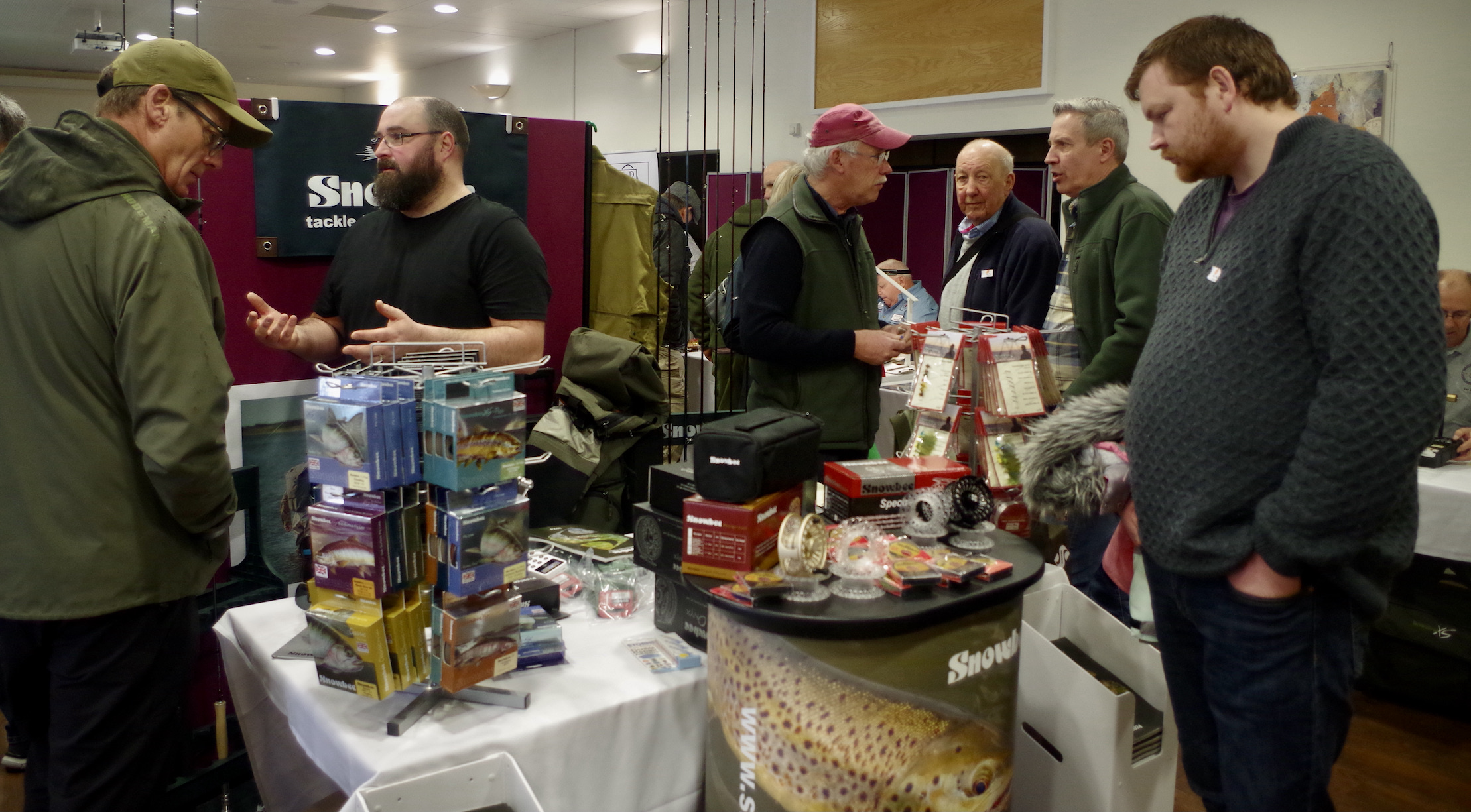
Charles Jardine opened the event stressing the need for anglers to get out fishing and support their local fisheries. He also spoke of the benefits of introducing young people into the fascinating world of fly fishing that has many positive benefits for mental health and general well-being.
Discussion flowed freely throughout the day with many plans set for the coming season. The long wet winter has undoubtedly impacted upon winter fishing with those fly anglers seeking sport with grayling and pike having a difficult time with only short periods when conditions were suitable to visit the water’s edge.
There has been considerable change over recent seasons as society has been impacted upon by Brexit, Covid and the cost of living crisis. Angling and fly fishing has of course been affected by all of this but it is perhaps even more important that our pastime thrives to bring much needed sanctuary from this gloom laden world.
Fly fishing has long been seen as a rather elitist branch of angling and when I started casting a fly fifty years ago the art of fly casting was still to some extent seen as a sport for the gentry.
The boom in Stillwater trout fishing during the 1970’s broke down these social barriers to some extent as a wider section of society enjoyed catching rainbow trout stocked into water supply reservoirs.
I remember being thrilled to catch the occasional limit bag of trout when I started out with the fish averaging around 1lb. As fisheries spread competition increased and small still-waters started opening stocking ever larger trout. Into the 1980’s and 1990’s double figure rainbow trout became a regular feature with some fisheries stocking fish to over 20lb.
This increasingly artificial commercial fishing resulted in ever increasing expectations from anglers. Another factor that perhaps influenced stocking was a significant increase in cormorant populations across reservoirs. The stocking of rainbows under 1lb 8oz became unviable as smaller trout were simply mopped up by these predatory birds.
Covid impacted upon us all but there was an initial post covid boom in fishing as anglers escaped to the great outdoors to enjoy a pastime that offered a safe environment. The value of fishing to mental health became much appreciated and for a time it seemed fly fishing was in a good place.
Sadly, the cost of living and angler’s unrealistic levels of expectation has resulted in an unsustainable situation. The spiralling cost of fish food and hot summers has impacted upon the farms that provide stock fish. The result is that fisheries are forced to pass the costs onto customers. In a cost of living crisis, it is very much a case of the survival of the fittest and as a result we are seeing the collapse of some fisheries Draycote Water in the Midlands being a case in question.
So having painted a rather gloomy picture of the fly fishing world in this country I will now look for those proverbial green shoots.
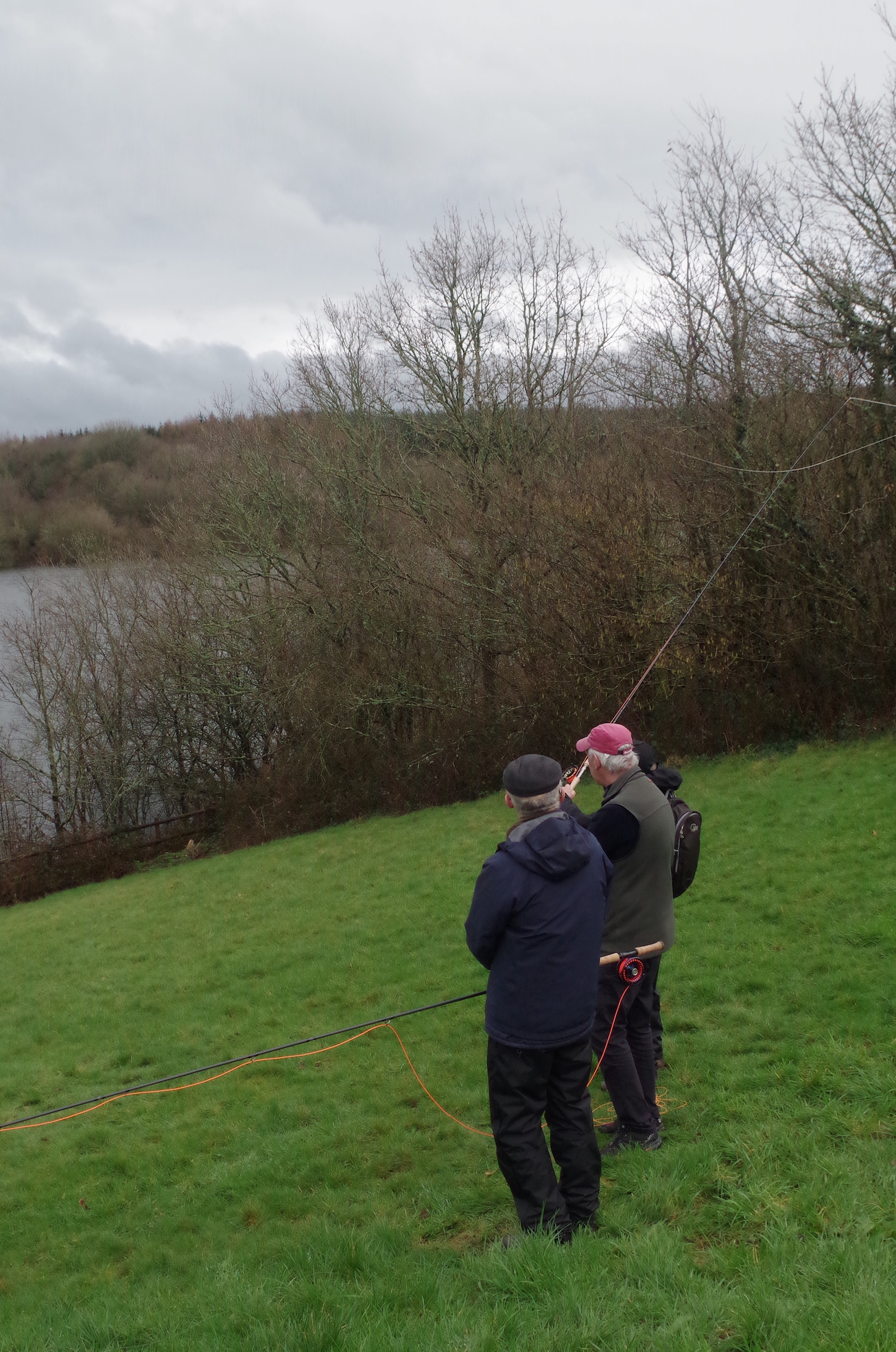
This year’s fly fair brought together a wide dynamic of anglers from the West Country Fly Fishing scene. With a new season ahead, there was undoubtedly a positive and optimistic drive as the leaders of this pastime urged us to get out fishing and support our local fisheries.

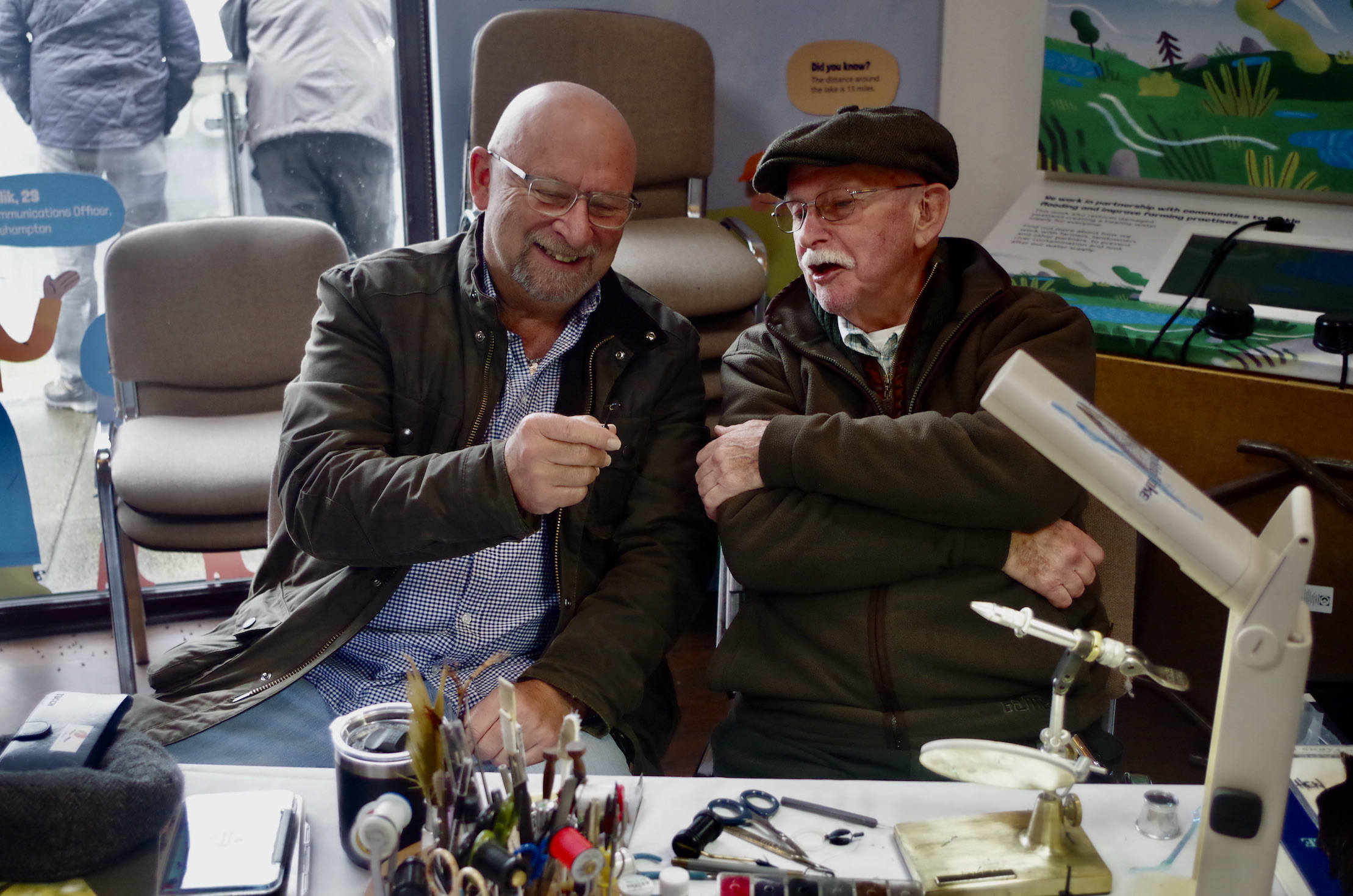
Concern for the environment was evident with fishery associations promoting their waters that are often surprisingly cheap alternatives to the commercial waters.
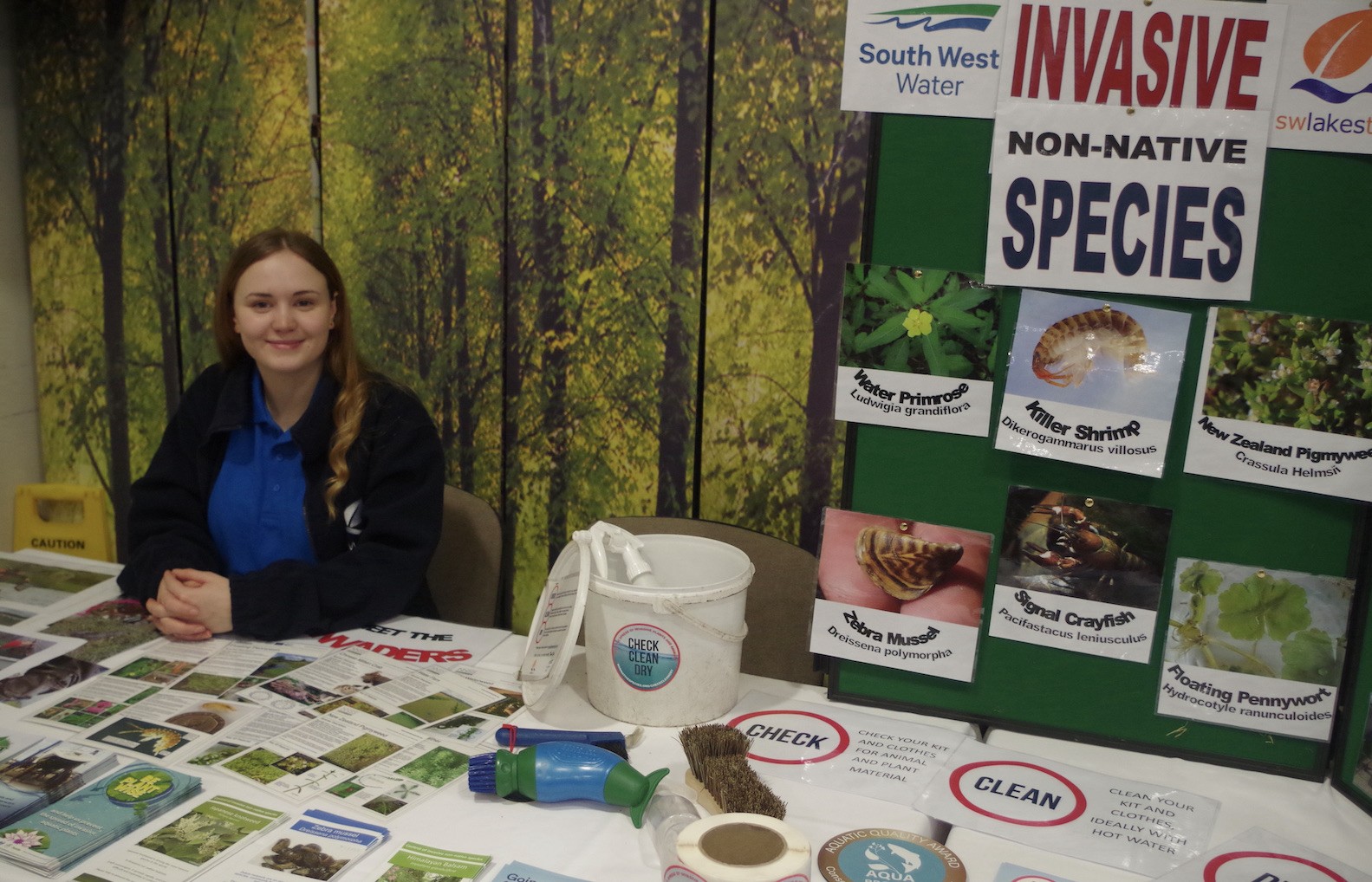
Companies like Catch and Fish Pass are now offering a new way to buy day permits using the latest mobile phone technology.
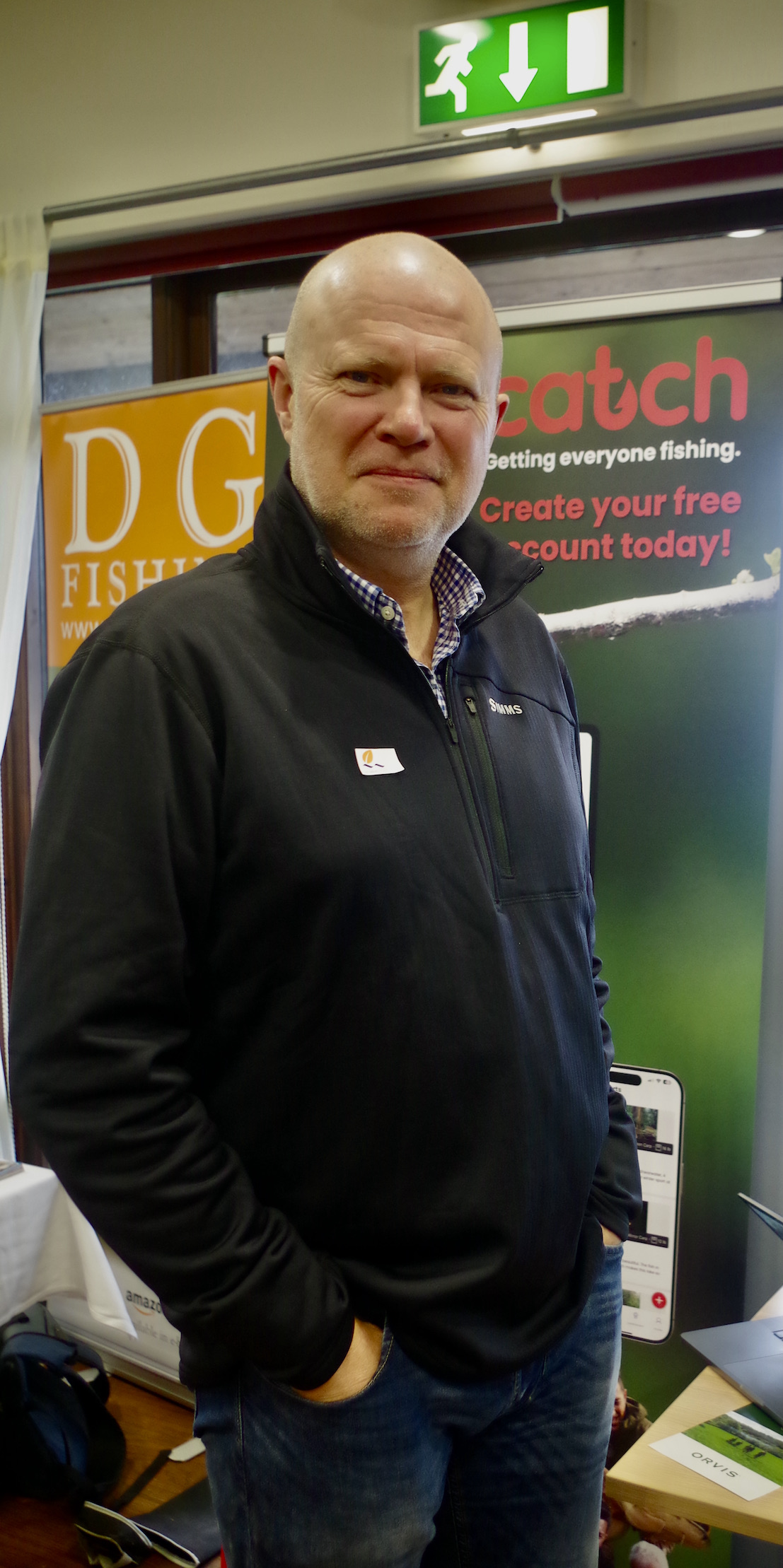
In contrast to the modern world traditional craftsmen like Luke Bannister were at hand to display magical wands of split cane that add sweet perfection to an angler’s day.
I took pleasure in introducing Michelle Werrett whose new book Song of the Streams is enchanting readers to fellow author Mike Weaver whose writing has delighted West Country anglers for many decades. His book In Pursuit of Wild Trout published in 1991 is a classic tome that is timeless in its validity.
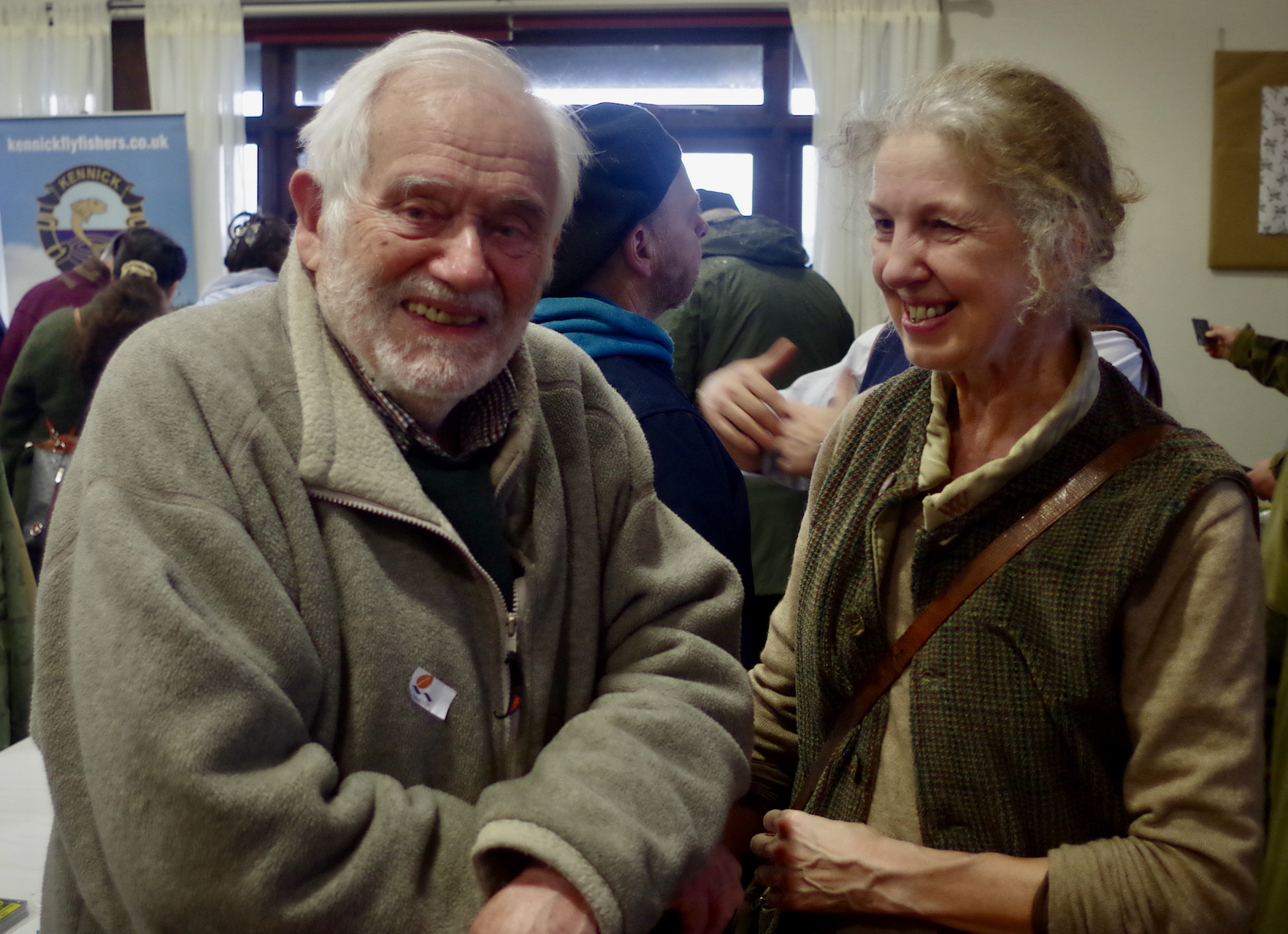
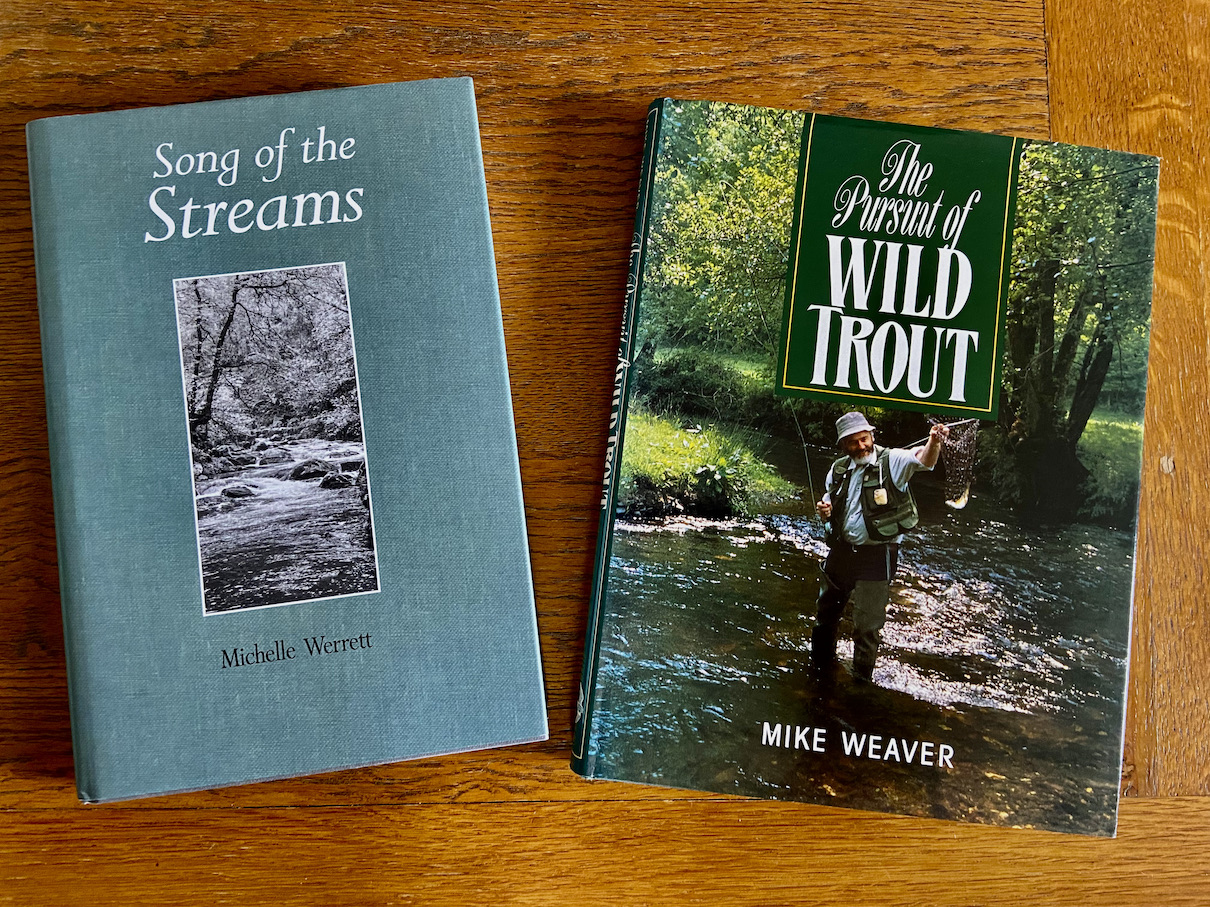
The West Country has a wealth of wild streams that offer exciting fishing for wild brown trout and a sadly diminishing number of salmon and sea trout. Adrian Bryant has been promoting the excellent film Riverwoods across the region and I joined him in presenting a short preview of this film giving my own brief view on the tragic decline of salmon.
Chatting with many at the Fly Fair it was apparent that there is a willingness to adapt and there are signs that new thinking is starting to break down the barriers of tradition. There is a growing desire to fish for varied species across different waters.
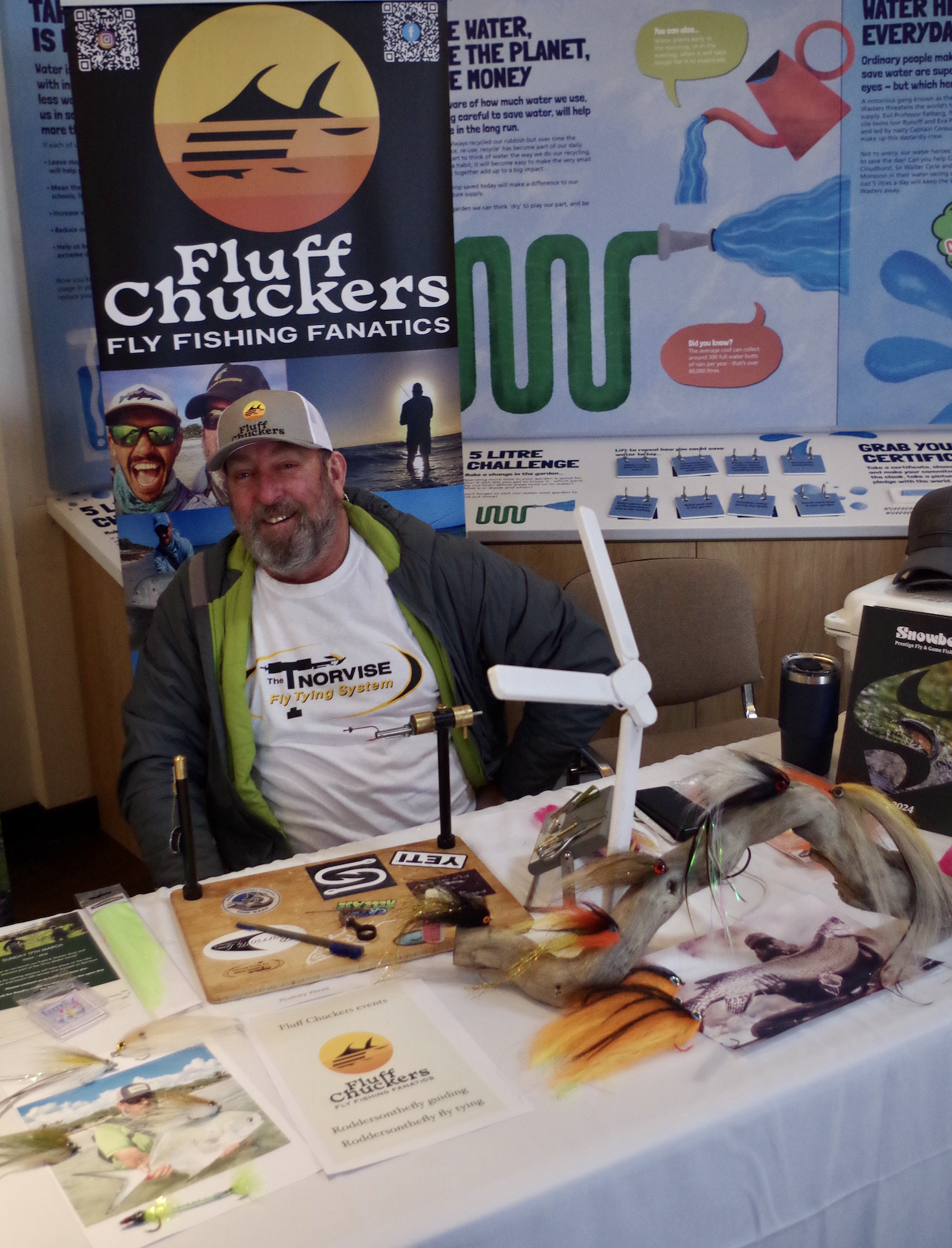
Pike from large stillwater’s and canals are an increasingly reported trend. Perch, rudd and carp are also gaining a following with Dominick Garnett columnist for the Angling Times giving a thought provoking talk on fly fishing for coarse fish. There is also an increasing number of anglers targeting sea fish with bass and mullet offering exciting sport during those hot months of summer when the trout are dwelling deep down in the reservoirs.
There are those who taking fly fishing into cross over territory with LRF with talk of using squirmy flies employed to catch blennies and other species from rock pools using 2 wt. rods more often used to target wild brown trout in moorland streams.
The definition of Fly Fishing on Wikipedia is “ Fly fishing is an angling technique that uses an ultra-lightweight lure called an artificial fly, which typically mimics small invertebrates such as flying and aquatic insects to attract and catch fish.”
This differs somewhat to my own thoughts where I had always believed fly fishing to be a technique that involves projecting the fly to the fish using a line as the weight. The traditional casting styles were entrenched within my mind set. But I now see an unfurling world of unorthodox presentations as anglers dibble and jig their flies or lures.
This is a world far from those days captured within the classic tomes depicting Fly Fishing on the revered chalk streams of England. Surely though there is room for all as our splendid pastime evolves as it always has?
We are living in times far removed from those of Halford whose doctrine of the Upstream Dry Fly stimulated debate within the world of the wealthy and privileged during Victorian Times.
I returned home from this year’s fly fair full of enthusiasm for the coming season with plans made that this year I really must try to make happen.

Many thanks to Ashley Bunning and all at South West Lakes Trust for hosting a fabulous fair.
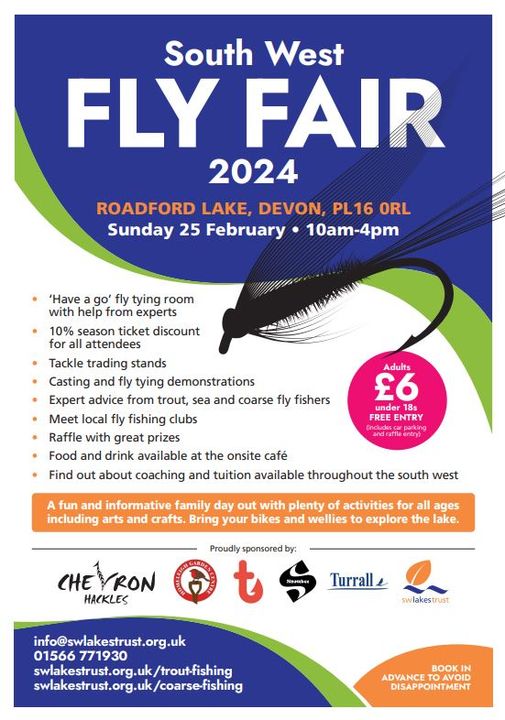
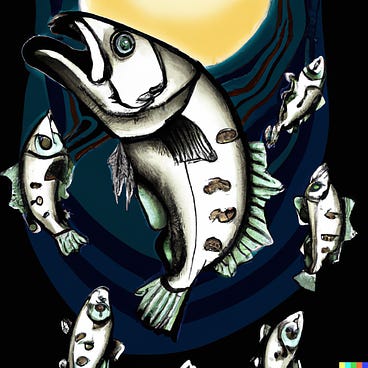
Twilight
The river beckons and eyes falter, straining in the fading monochrome half-light. As they weaken, so our ears fine-tune to the emerging clamour of the night: The chattering river, the owls and the scurrying creatures of the bankside. The night time world is waking.
The dictionary has a word for this: it is the hour when the world turns crepuscular. And is there a better time to go fishing? The hour when we crepuscules emerge blinking into the gathering gloom?
So let’s get down to business: My first and most important task is to reach my pool in time to catch the last of the light. Once there I’ll sit on the bank, read the lie of the water and wait for it to get properly dark. This is, of course, an impossible call because no matter how long I sit and stare, the darkness never quite takes over. My widening eyes adapt just enough to keep me merely half-blind: I see the shadow shapes of trees and anything small silhouetted against the sky. But where land and water merge, all detail is lost.
But hey, who’s in a hurry? I’m enjoying the moment and all the while my senses paint a picture of the pool: the chuntering water, the flitting bats I glimpse but no longer hear, and sometimes, most wonderful of all, an otter or even two. And there – did you hear it – a fish churning close to the far bank. Just a moderate cast downstream. Catchable, but still I wait
Inevitably, my mind starts to wander. Big questions press in: Why do I catch nearly all my Sea Trout on Teal, Blue and Silvers? Why don’t I fall in at night – I’m quite good at it during the day. And what the heck is a Sea Trout?
Ah, there’s the thought. What the heck is a Sea Trout? For a great deal of my life this didn’t much bother me. They’re a vague sub-species of brown trout, right? Rather like the relationship between Steelhead and Rainbow Trout. So trout are trout, salmon are not, and sea trout are somewhere in between. Taxonomy? Pah! Who needs it.
I was wrong. Forget Salmon, they’re something else and irrelevant to this article. But Sea Trout and Brown Trout are the same thing. Identical, right down to their last drop of DNA. One’s bigger and the other is usually smaller, because one went to sea and the other didn’t. Or, rather, it hasn’t yet. One is bright silver when it runs back into the river – but soon reverts to its true brown trout colours.
This is important because it puts the lie to a theory I’ve been nurturing for a decade or two. Namely, that with Salmon numbers in free-fall, Sea Trout could save my fishing.
My theory went like this: Most returning Sea Trout are smaller school fish. They run into their rivers in shoals, while their bigger brothers and sisters make their way in their own good time. And over the decades school fish been getting smaller. I have not a shred of evidence to support this, but it seems to me they’ve halved in size from 1.5lbs to 3/4lb. There are plenty of wise river keepers who will say that the reason for this is that 3/4lb Sea Trout can swim through the inshore gill nets, set for bass and that kill uncounted numbers of Salmon (and big Sea Trout).
So, I reasoned, there would always be sea trout returning to river hitting the redds and ensuring the future of the, um, Sea Trout. Long after the last salmon had played the last post, there would still be sea trout slipping through the nets and heading up-river and towards me.
Ah well. Wrong again.
My theory fails at that moment when part of a river’s Brown Trout population decides it’s going to up sticks and go to sea. It may be because there are too many competing trout in the river. Or not so many trout, but even less food. Why one fish decides to go and another doesn’t we can’t say. Some do, some don’t.
Maybe they just fancy a change of scene. When New Zealand’s rivers were stocked with Loch Leven’s trout all those years ago, there were rivers where the entire population of new fish upped sticks and left for the sea and a new river. They’d had look at their new home, didn’t like it and without so much as a thanks or goodbye, left never to return
However, the stakes on going to sea are high. Migrating smolts face many more dangers than had they stayed in the river. There are more predators, for example. And like salmon, climate change and warmer water is shrinking smolt size, and the smaller a smolt, the less chance it has of surviving the journey. So the decision to head to sea is getting more dangerous.
The reward for the ones that make it is food. They grow faster and bigger, and that pays off when they return to the river to breed. Big fish can dominate the redds.
So for this stage in their lives, the decision to go to sea is about the survival of all brown trout. They’re a species hedging its bets. Some stay, some go. Some will win, some lose. Hindsight is everything.
Unfortunately, that hedged bet is getting more dangerous. A recent Norwegian report surveyed 10,000 miles of Sea Trout rivers and lakes ranging from the Arctic to the south of the country. In only 25% were Sea Trout populations considered healthy. They had disappeared altogether in some rivers, and in 40% populations were in either a poor or very poor condition.
And their biggest threat? It’s sea lice, the major by-product of salmon farming. 83% of all the water surveyed was impacted by farmed sea lice. Amongst salmonids, Sea Trout are hardest hit by lice because they stay in coastal waters where open-net cage salmon farms are found.
The bad news doesn’t end with the fish farms. Globally, the fishing effort at sea has industrialised. At the same time, rising sea temperatures collapse ocean food chains and stop some fish breeding (fry are a major source of Sea Trout food). The laval soup at the base of the ocean food chain thins out, and the bait fish that depend on it get smaller and carry less body fat – in part because warmer water raises their metabolic rate so they have to eat more just to keep going. That metabolic trap works its way up the food chain – bigger fish also need to eat more just to maintain body weight, but there’s less food. This is the world Sea Trout migrate to feed in.
Unfortunately, staying in the river is also difficult. So much so that if I allow myself to get properly gloomy about this I have to say the trout rivers in my part of the world are becoming hostile environments for fish,
Trout redds are usually further into the headwaters than a Salmon’s. These smaller streams are warming faster as our climate changes, and they’re more vulnerable to farm pollution. The brutal truth is that the survival rate for smolts shrinks by as much as 70% if they start their return journey short of peak fitness and weight.
There’s more. The increasingly heavy rainstorms driven by our warming atmosphere wash redds downstream, leaving behind beds of small stones where once there was gravel. And, in my part of the world, rivers are a cheap way for water companies to move human sewage to the sea and boost dividends for shareholders. Meanwhile, dairy farmers have massively increased stocking density so slurry mixes with chicken and human shit to turn the water phosphate green and coat river beds with algal slime. Insects and fry don’t stand a chance. Clean rivers are increasingly hard to find.
Despite all this, I’m still fishing, still crepuscular and always thrilled to be part of the gloaming. Is there anything to beat the excitement of the wallop administered by turbocharged 2lb Sea Trout take at midnight?
And the weirdest thing about night fishing? It’s that I so rarely catch the opposite bank. I like to think this because I cast really well. I’m so good I could hit a dimpled rise with my eyes closed. Hmmm. A more likely explanation is that I always cast short. But I’m not changing anything now.
Finally, did I tell you about the time 2 otters thrashed and trashed my pool as I watched darkness close in – and how, as soon as they left, I caught an 8lb Sea Trout with my first cast and 6lber with my third?
There’s nothing on earth to beat crepuscular fishing. Although maybe I should experiment with some new fly patterns. It’s possible that Teal, Blue and Silver may not be the only fly that catches Sea Trout.
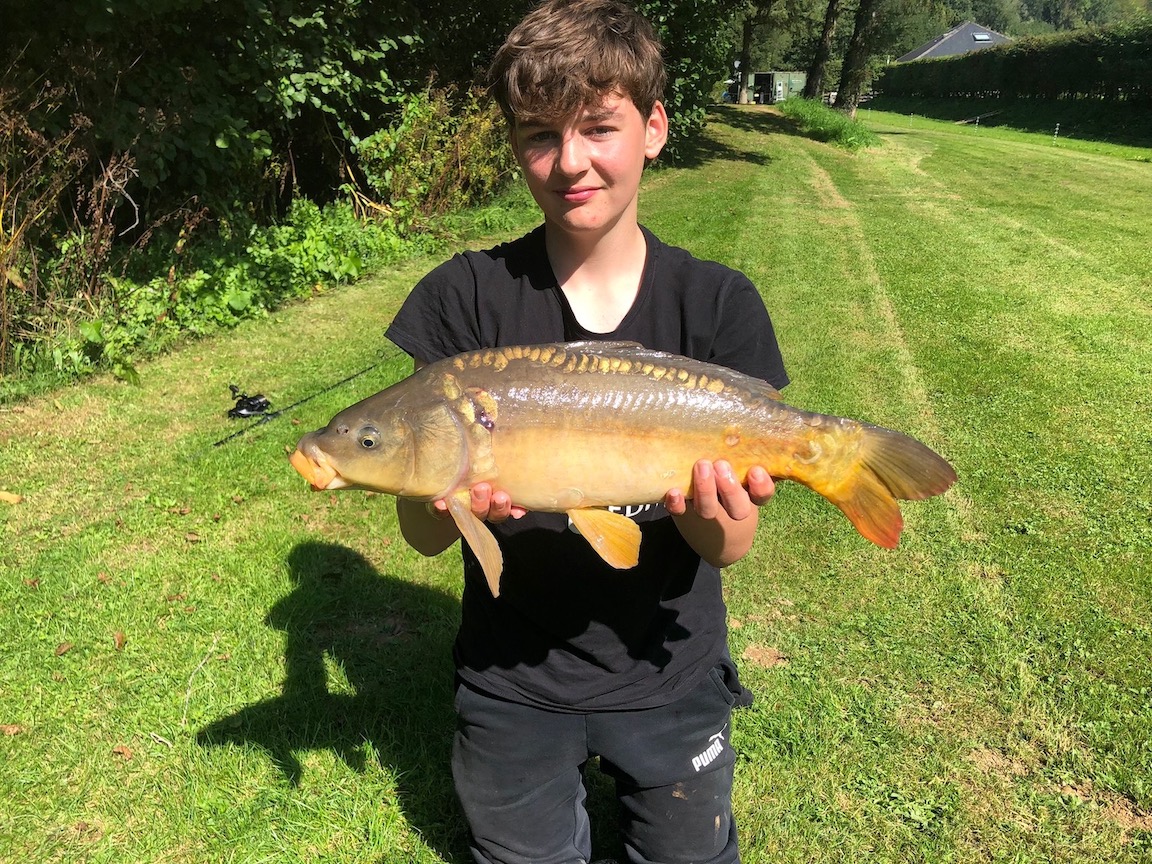
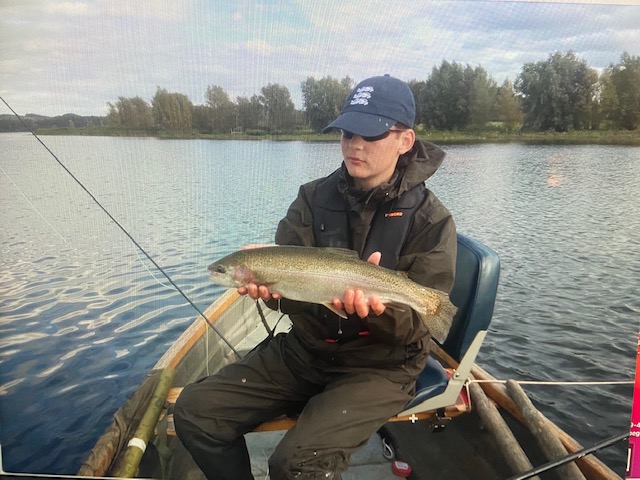
Aaron Bunning’s has enjoyed success on trips to Upper Tamar banking several fine carp including fish of 20lb 14oz, 19lb 14oz, 19lb and 18lb 12oz. All fish were caught using Nash Bait scopex squid. Great result Aaron!
A good stamp of fish are being caught from the venue at the moment, with the first South West Lakes Trust Mainline Baits pairs competition of the year next month, I don’t think many would argue if they managed to get these fish in the competition.
Places are still available for the March competition. With £3500 worth of prize money and Mainline Baits goodies available, visit our website to book a place:
The Carp Fushing removal project is also being repeated at Roadford this coming season!
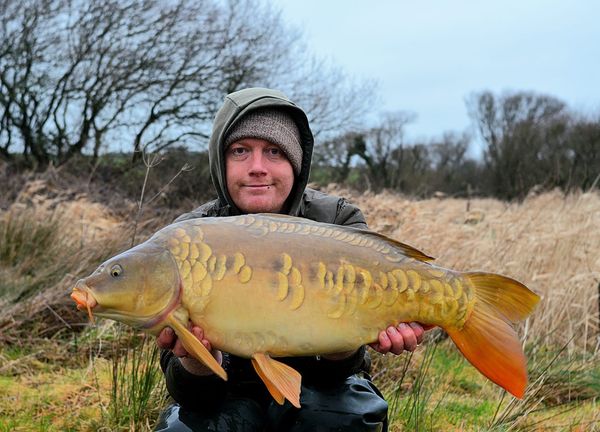
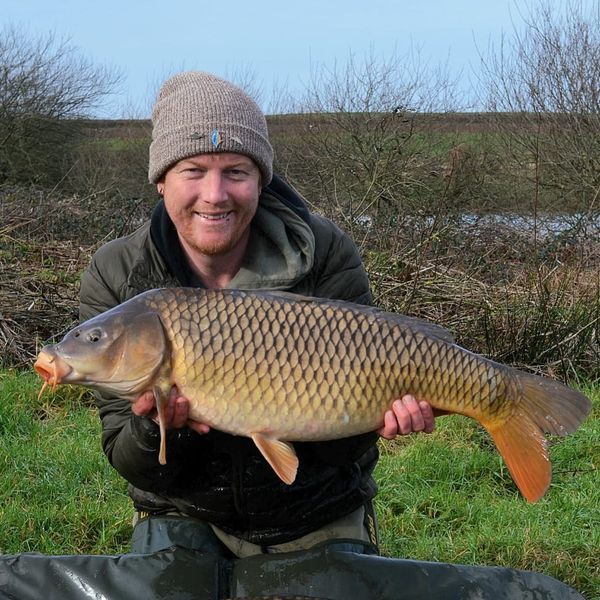
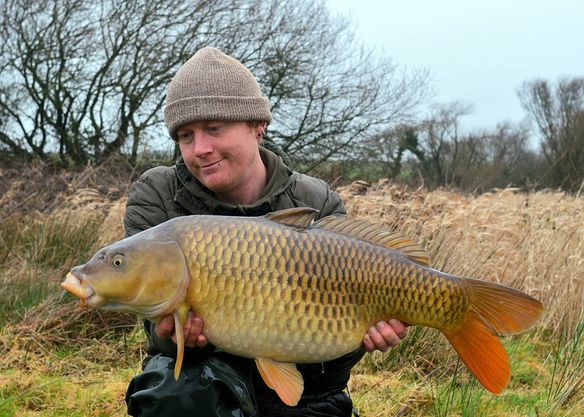
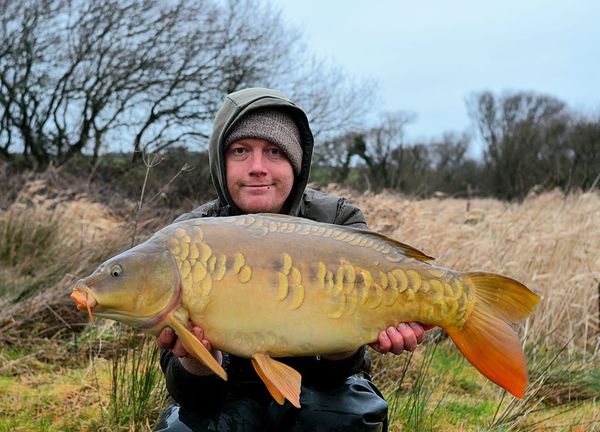
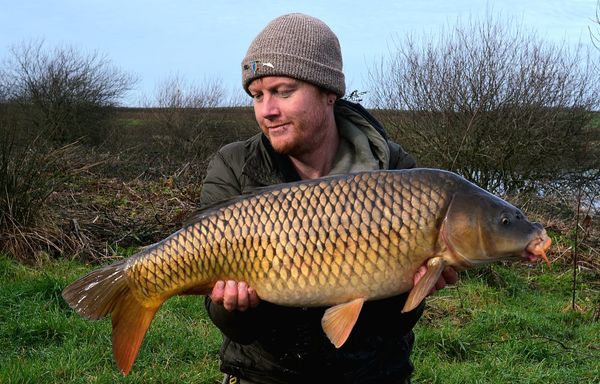
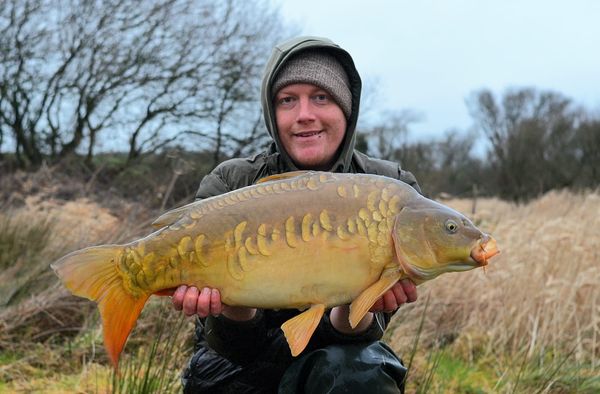
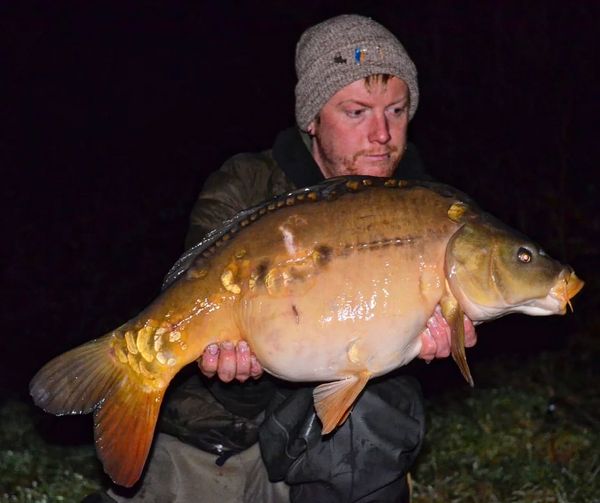
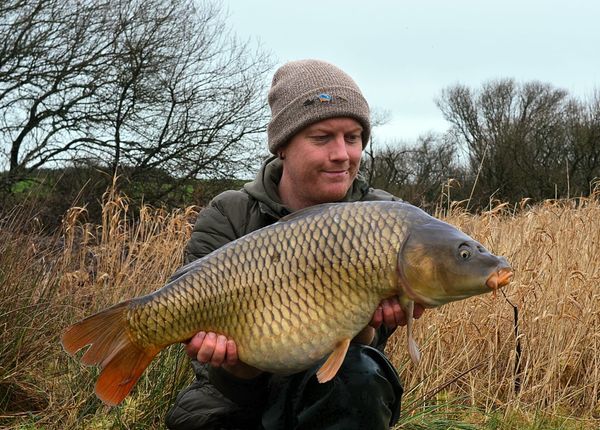

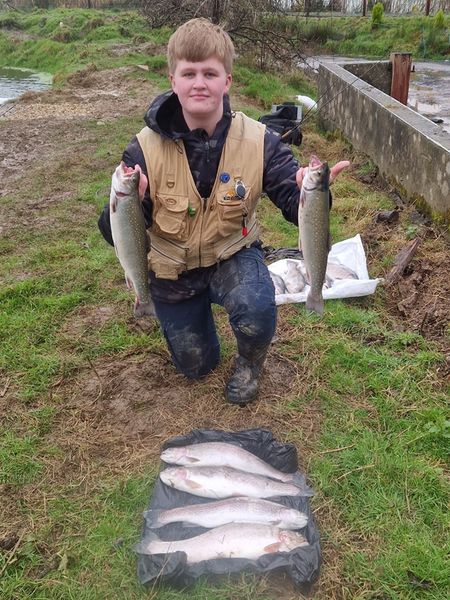

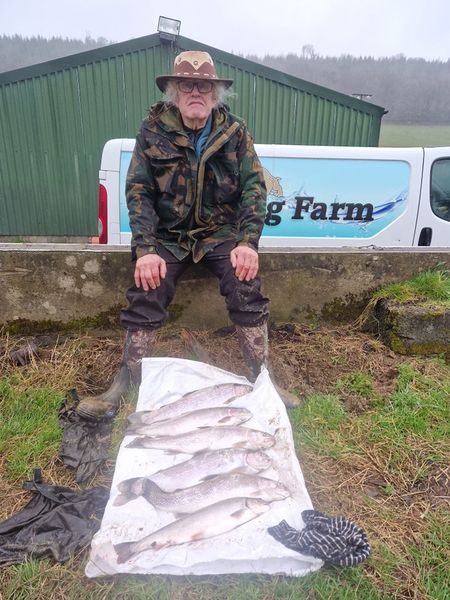
(Above ) Grandson & Grandad Ryan and Pete had their first fly session here at Bulldog and they certainly weren’t disappointed! Both on a 6 fish ticket, they braved the appalling weather to achieve some amazing results! Both bagged out with hard fighting rainbows and 3 of the newly added spartic’s were also caught!
